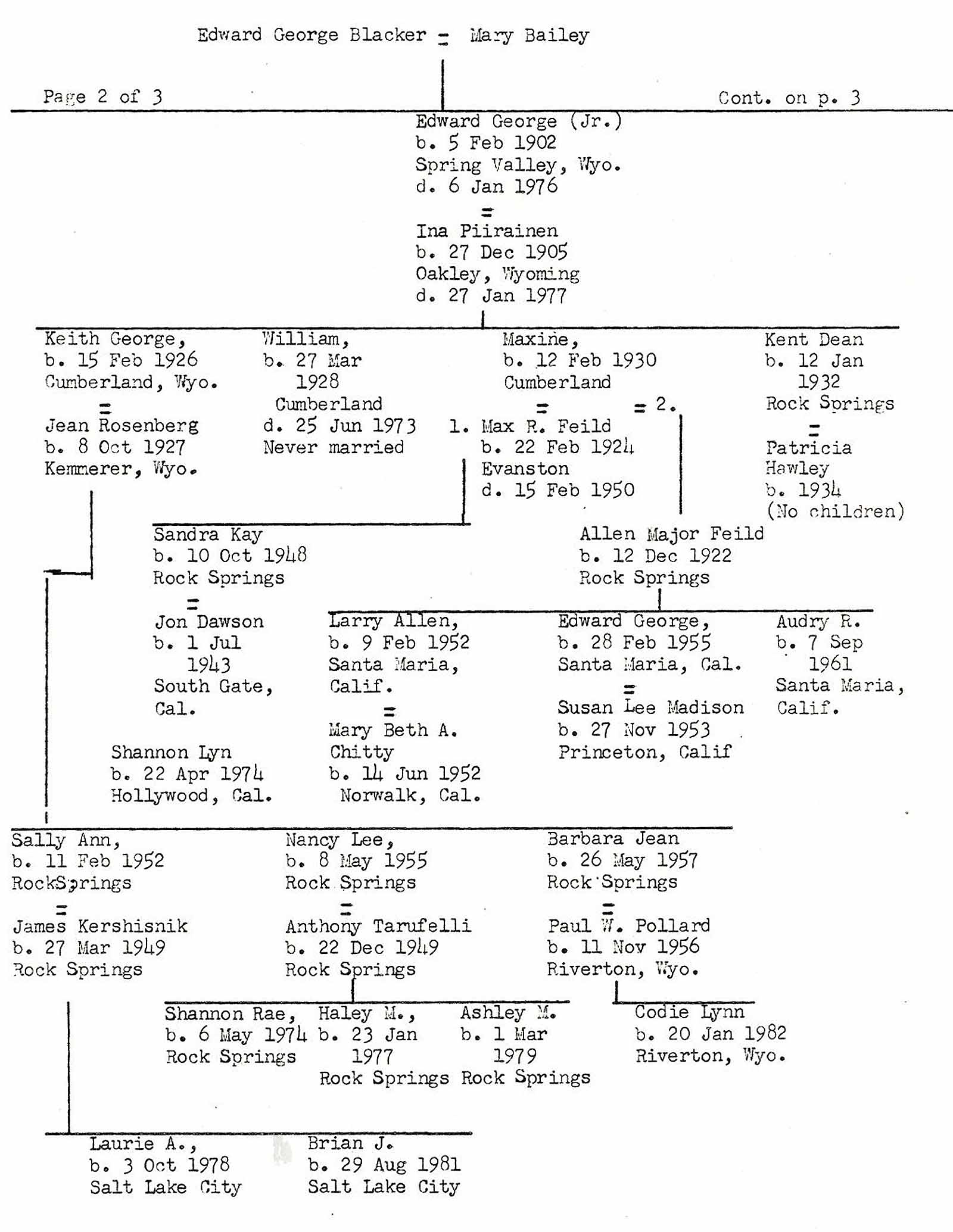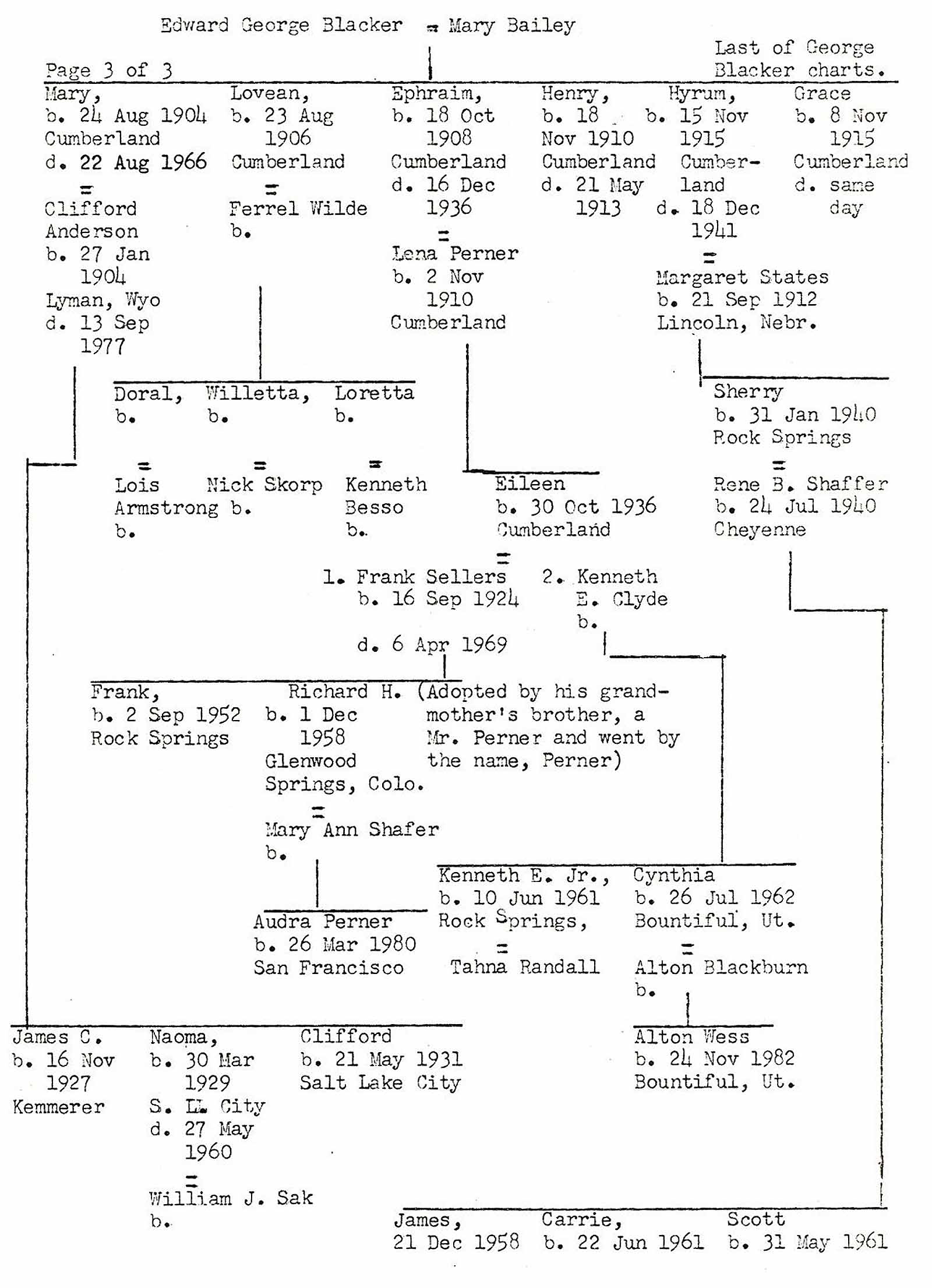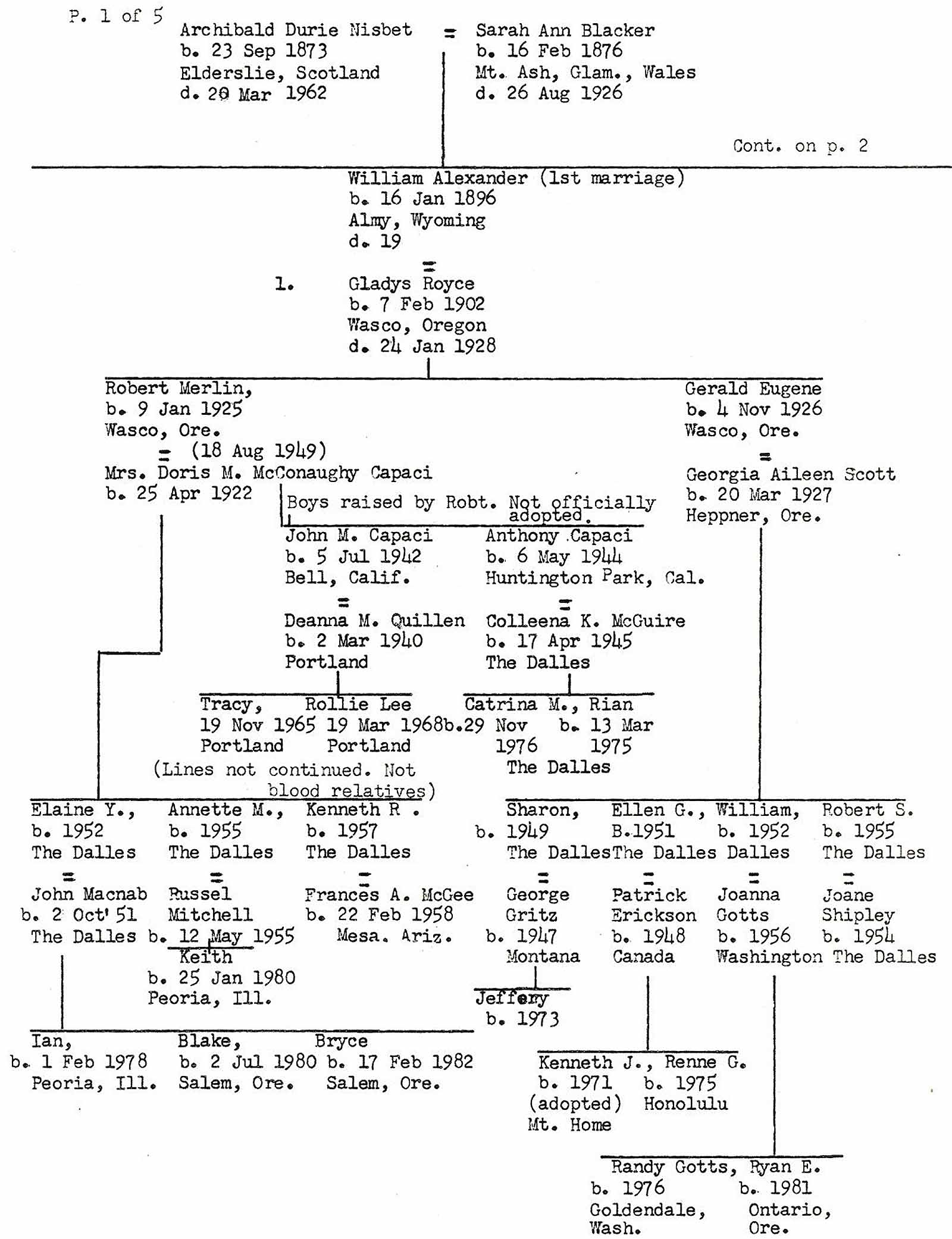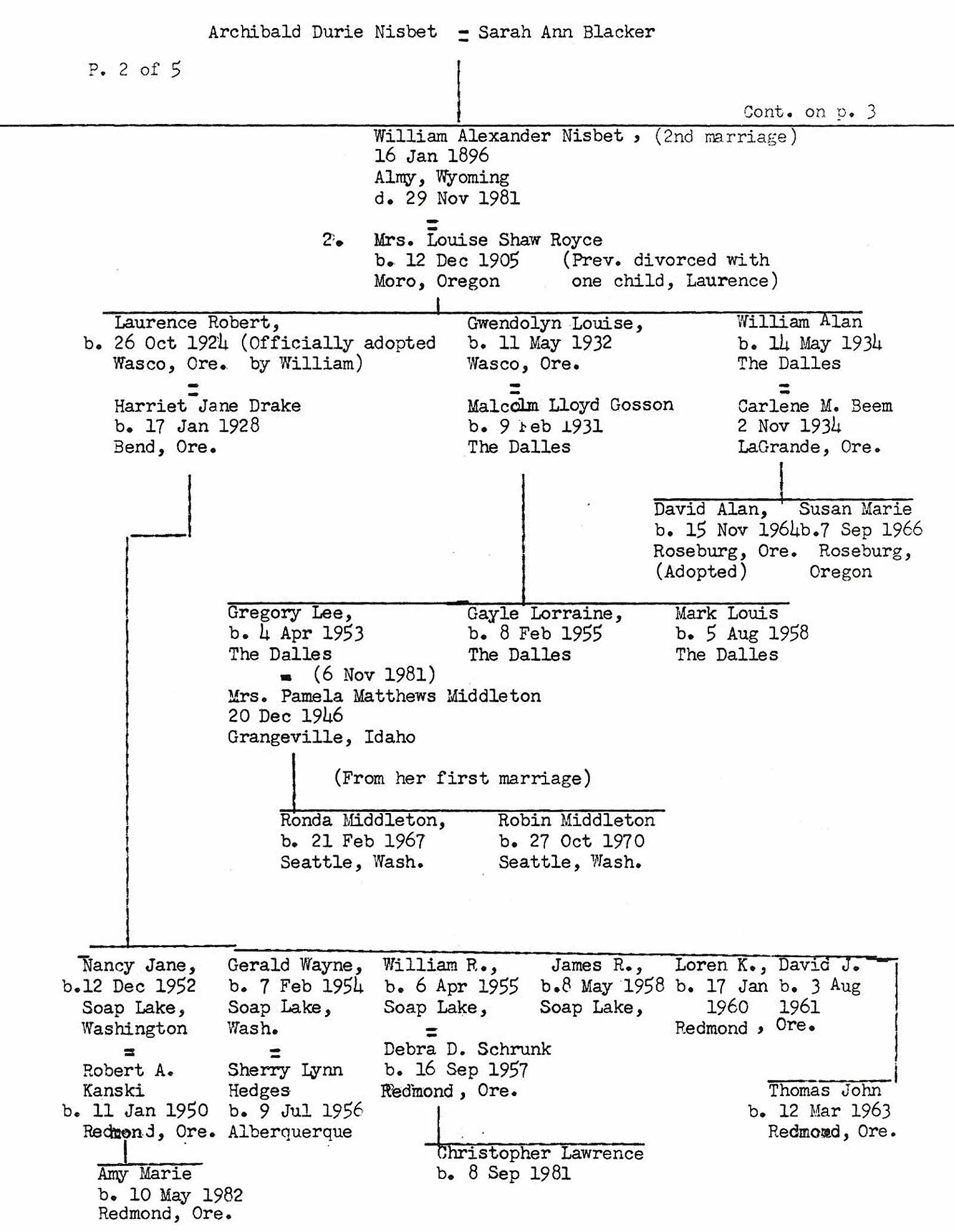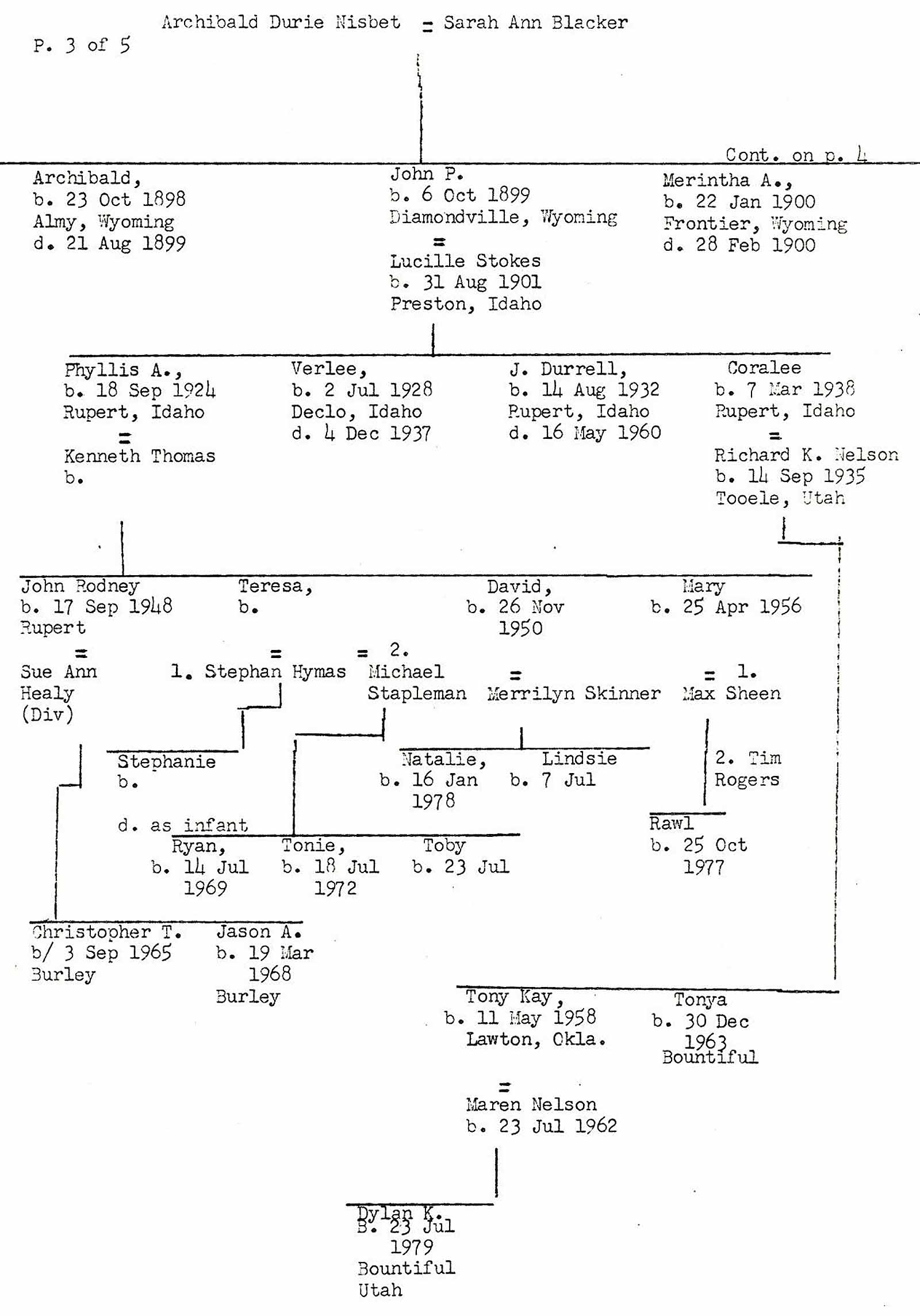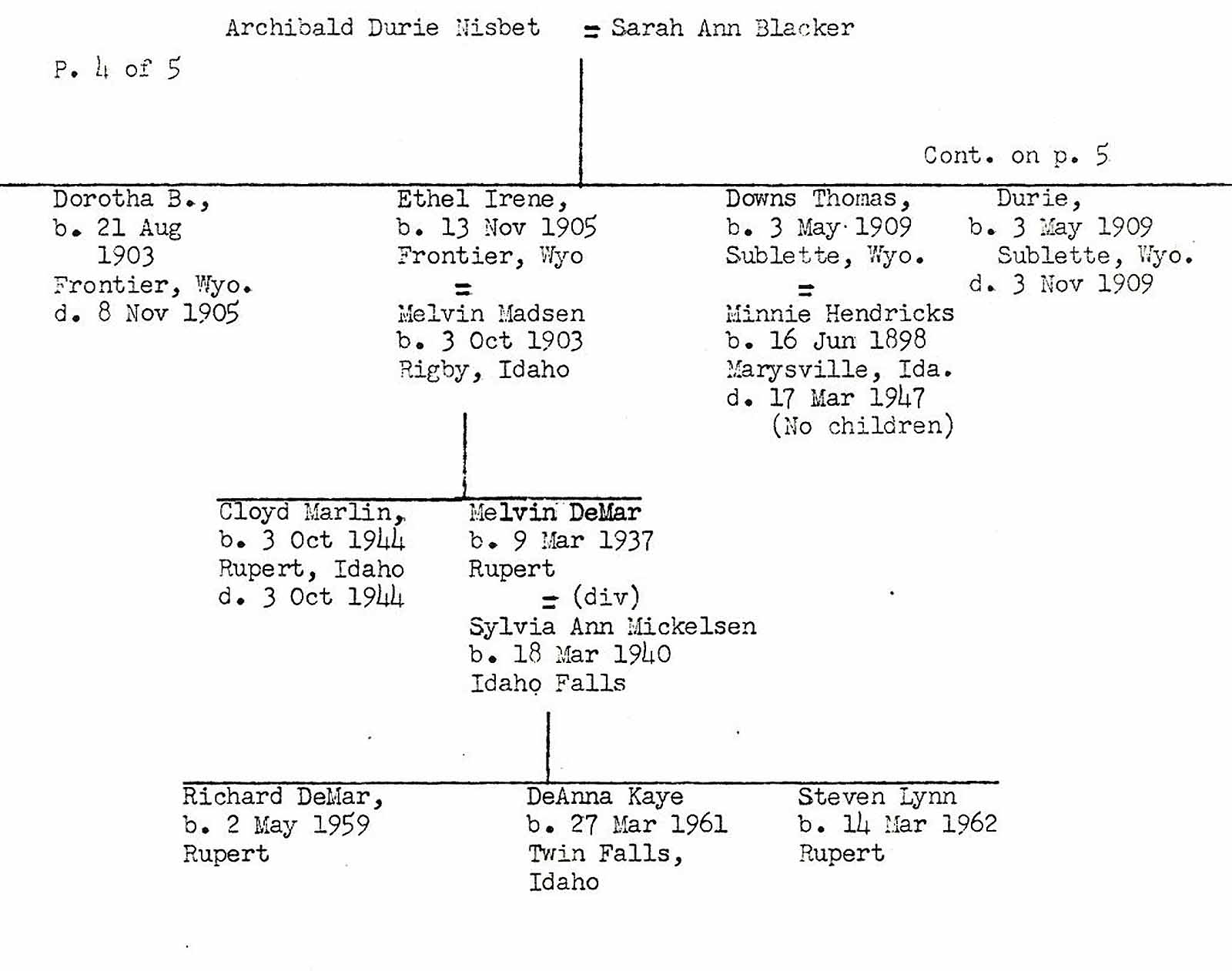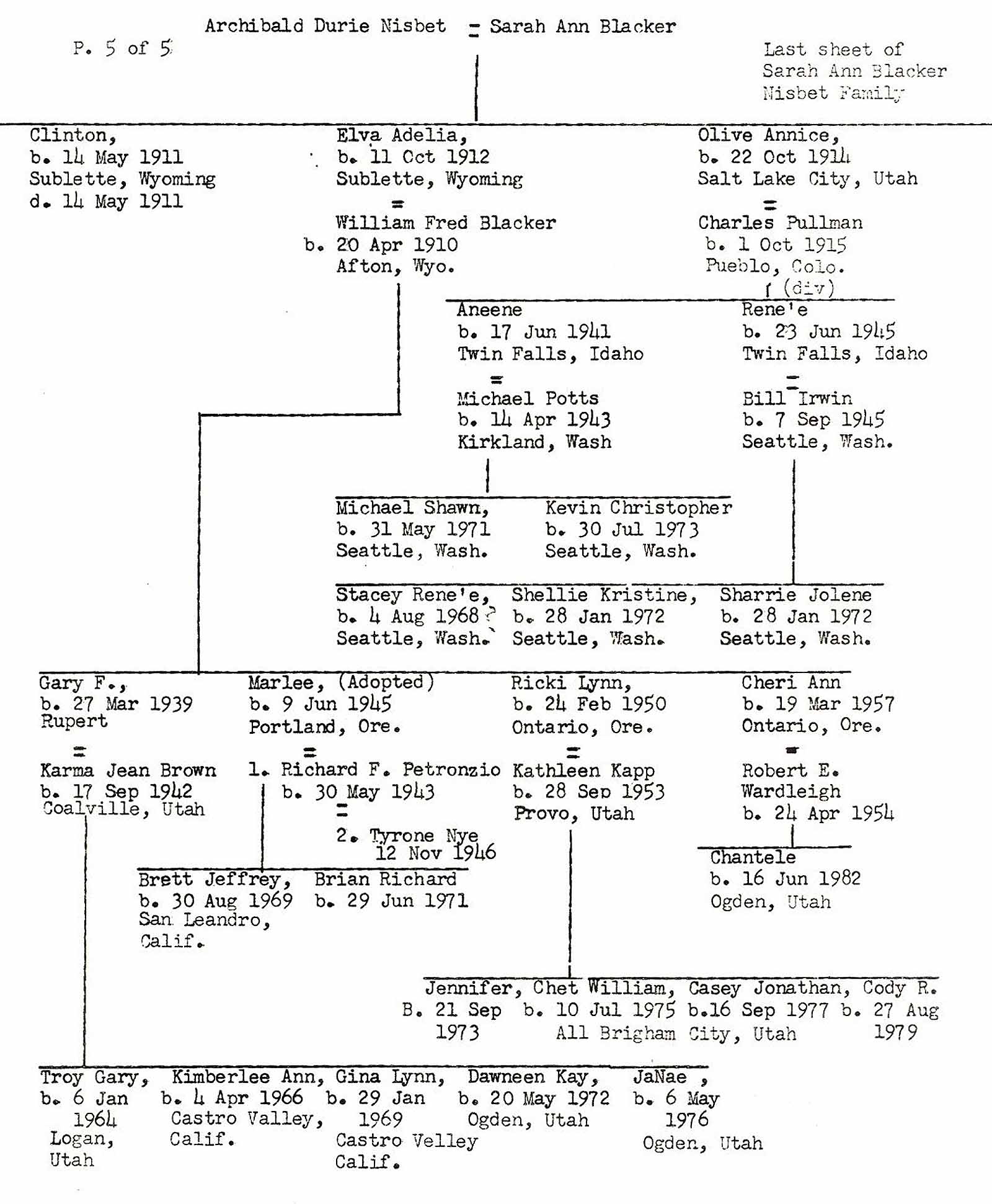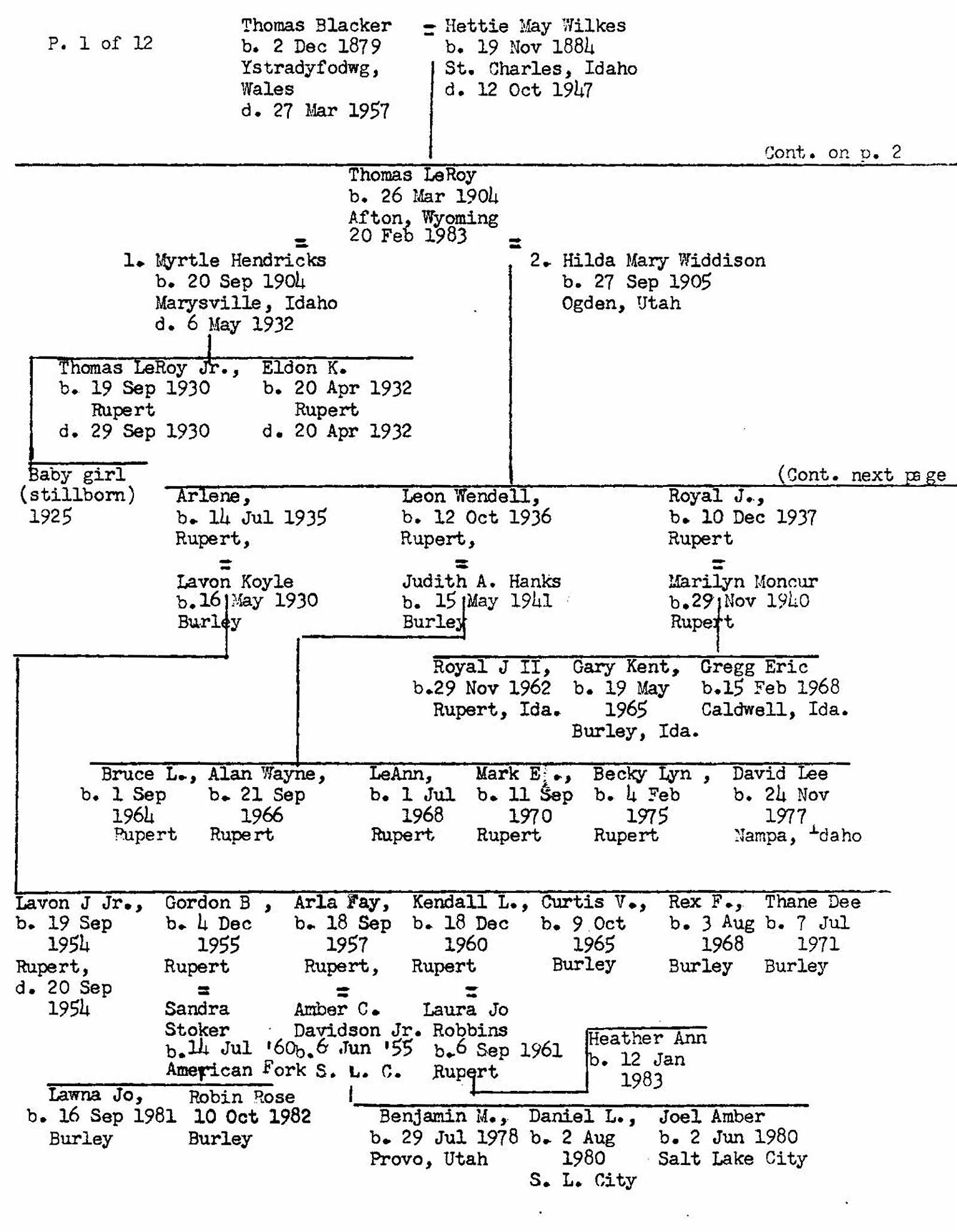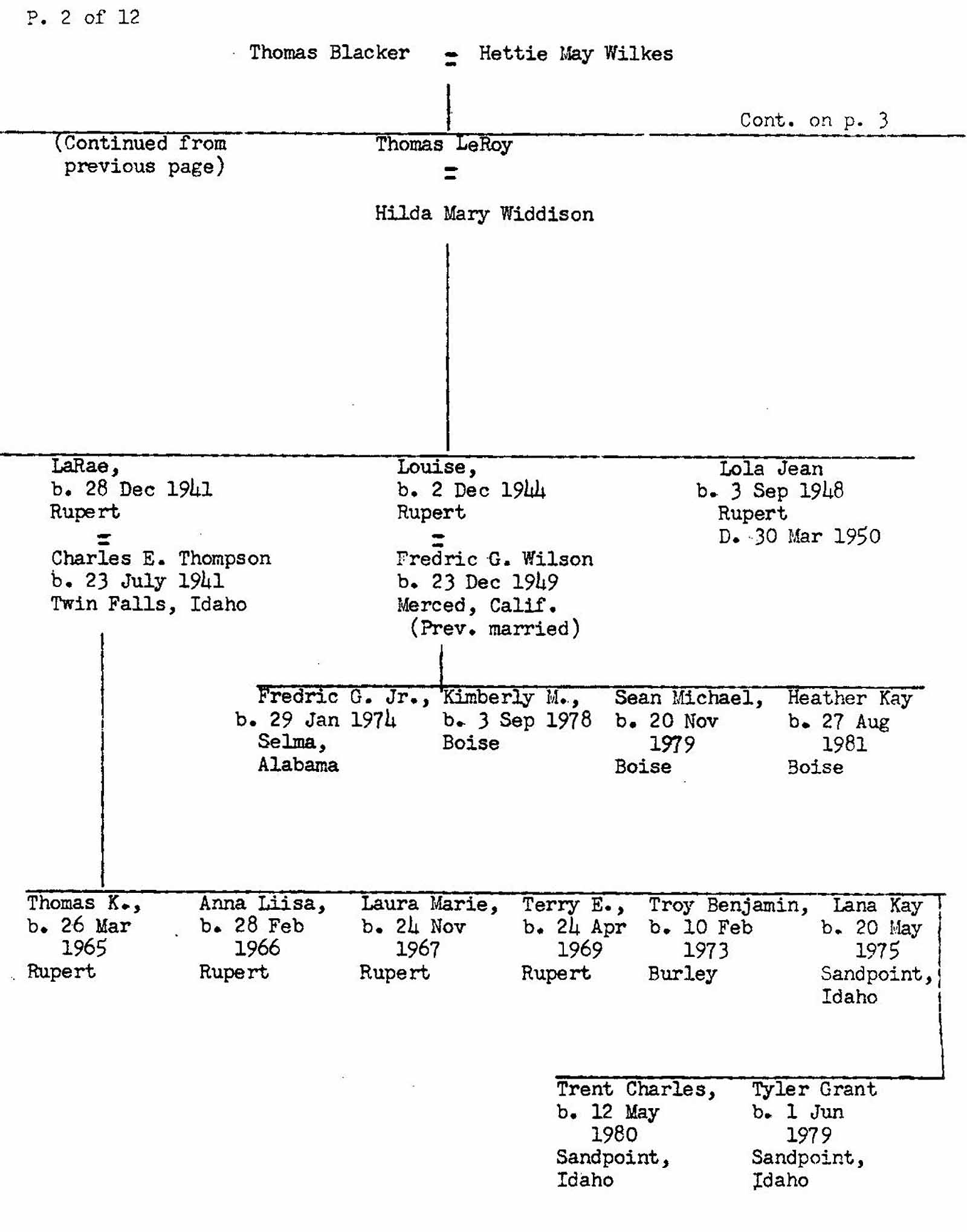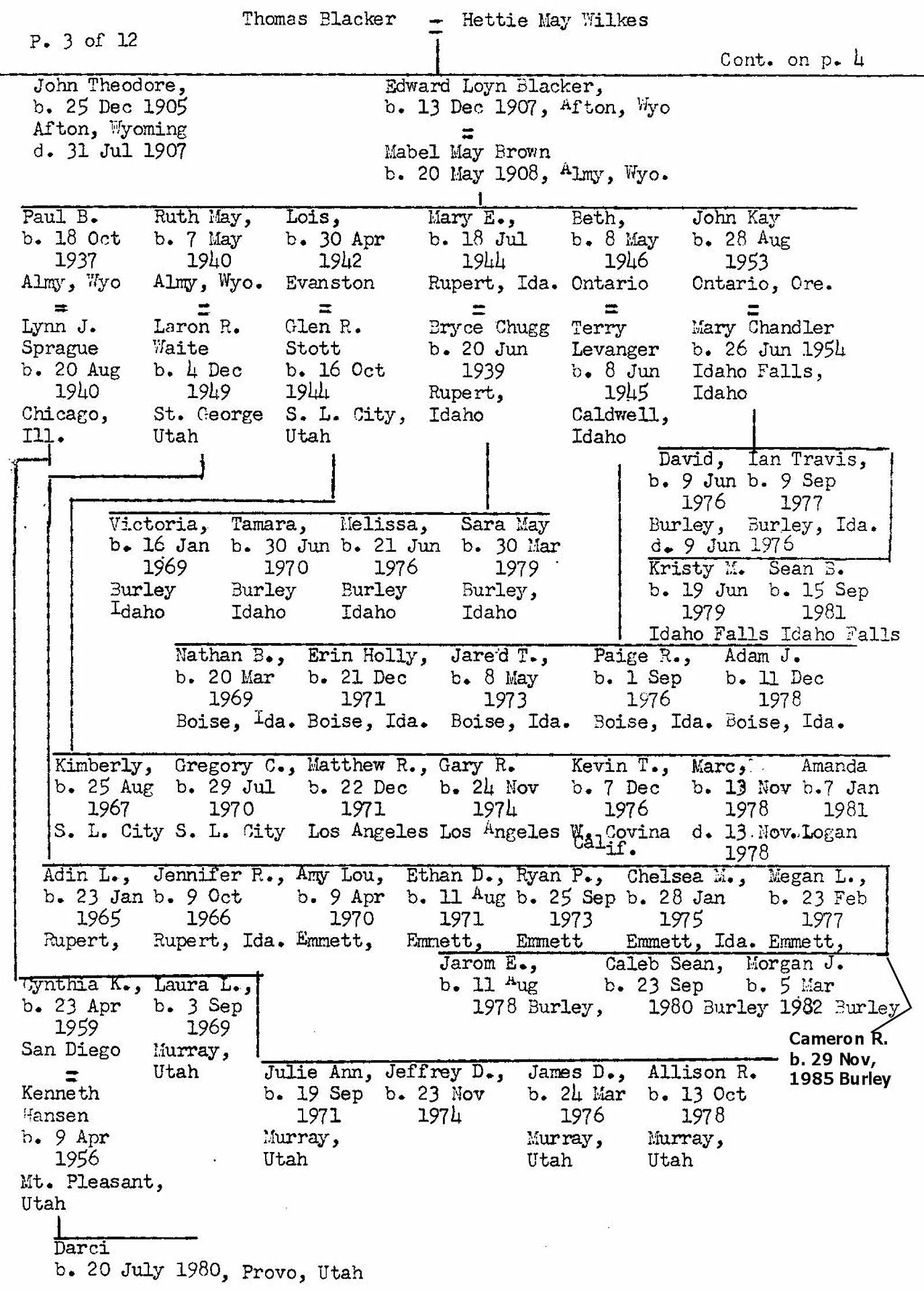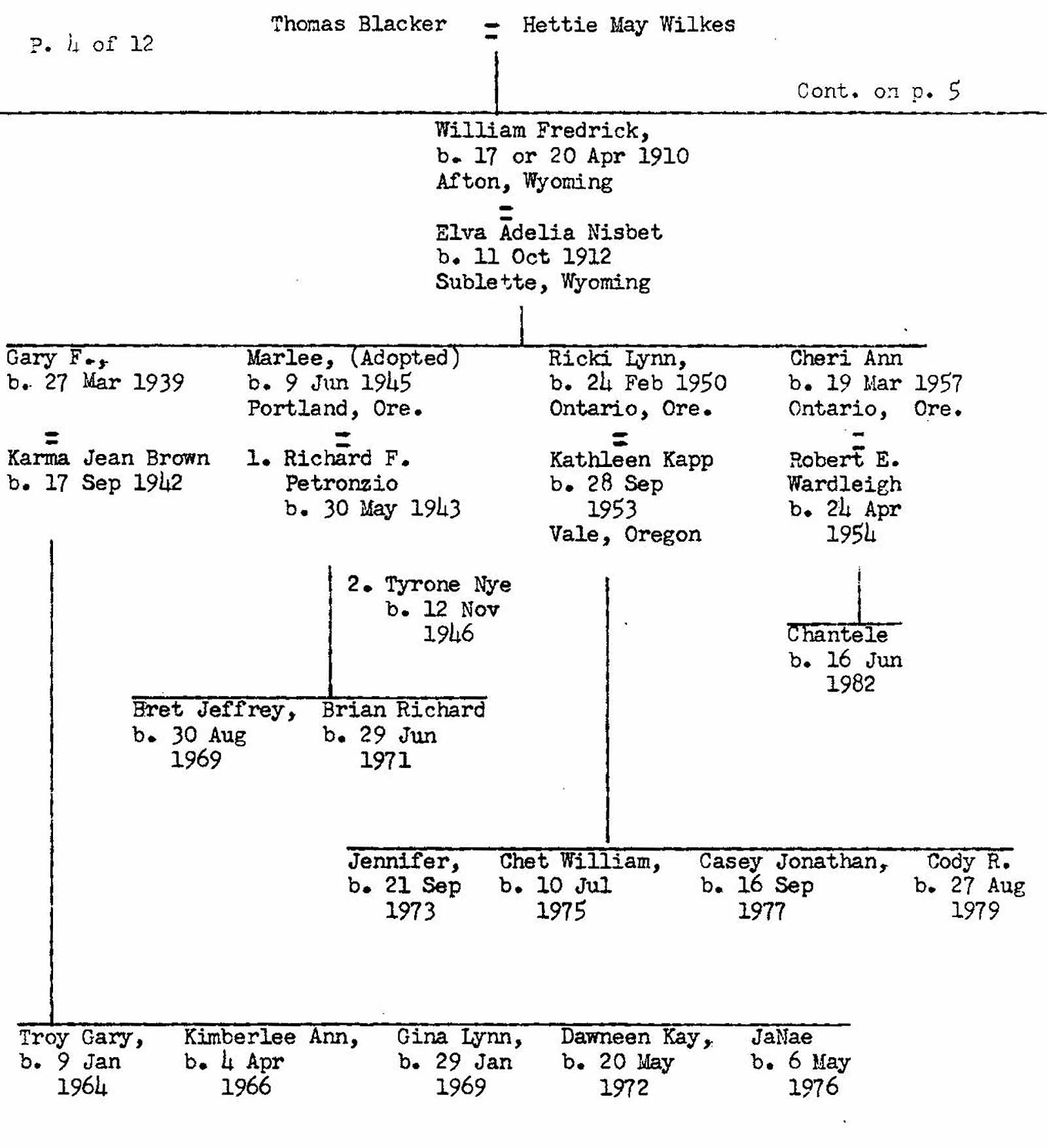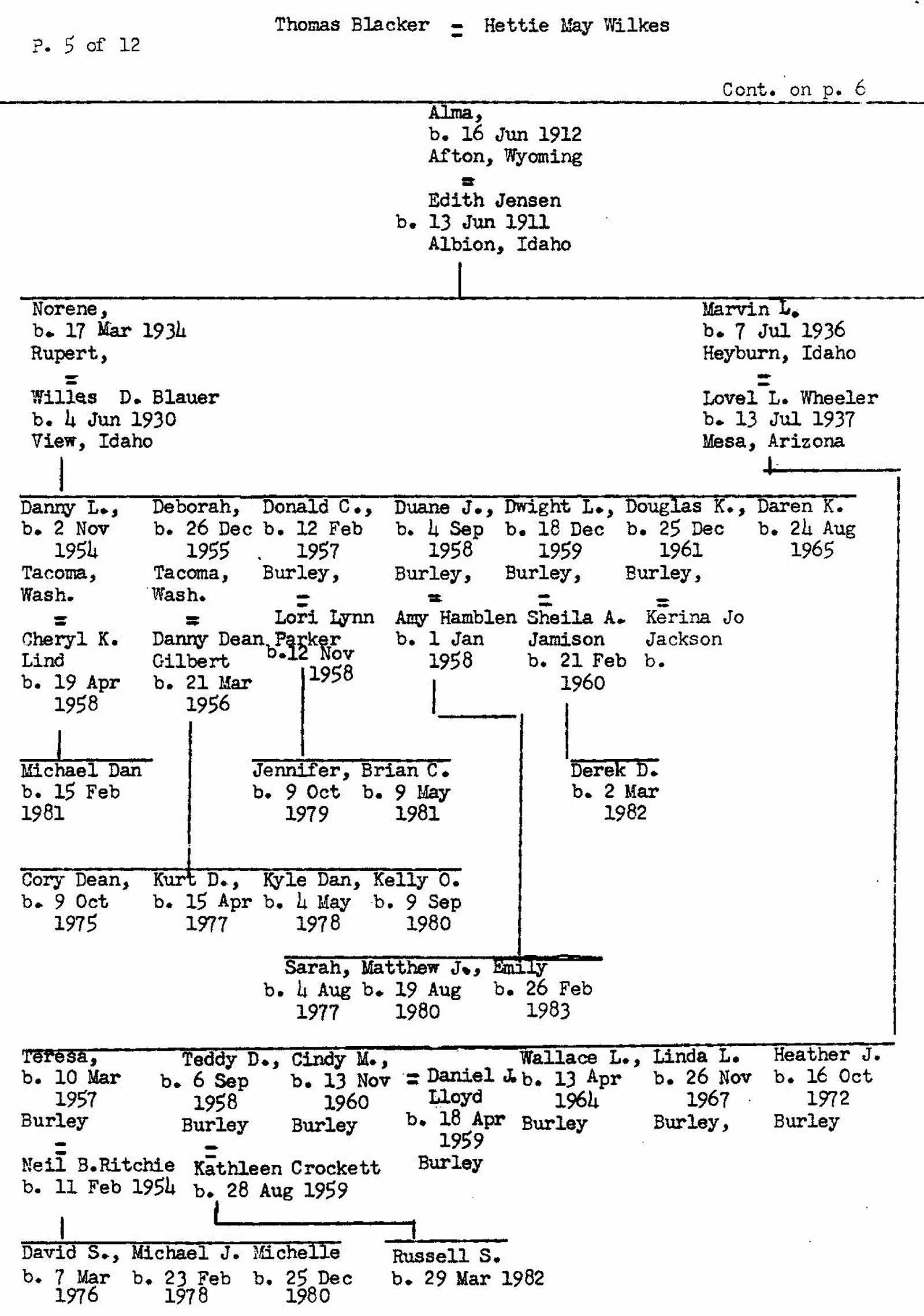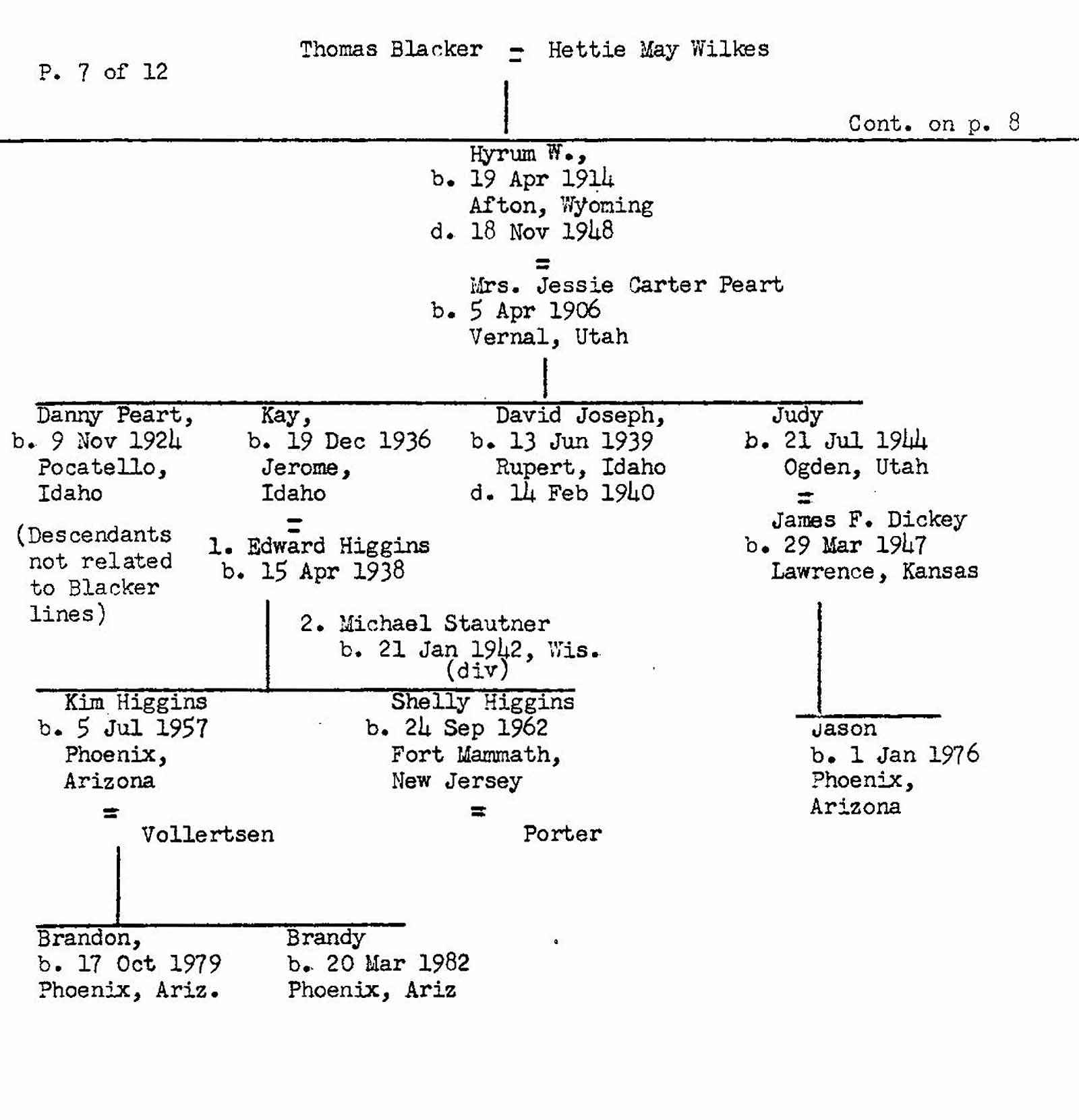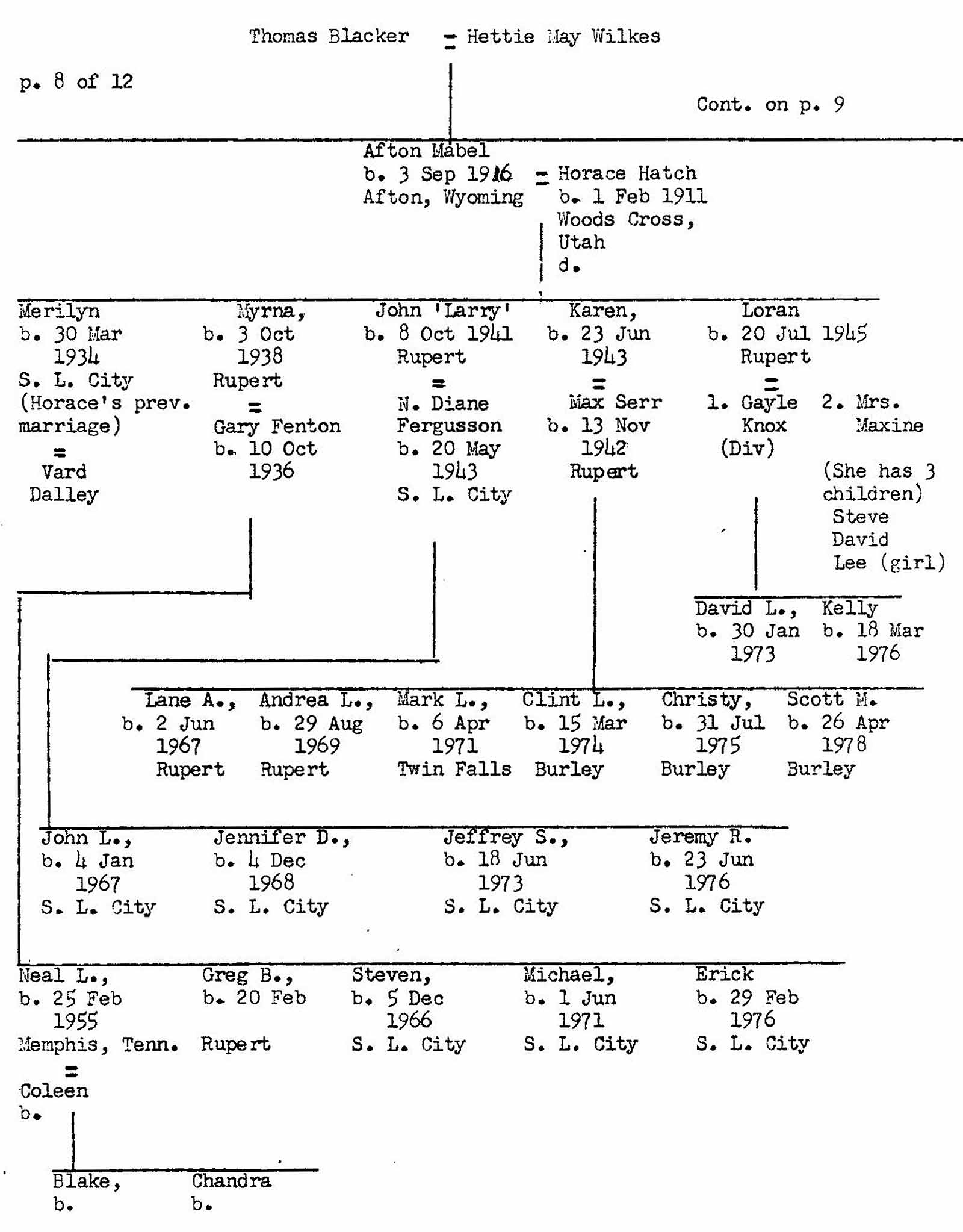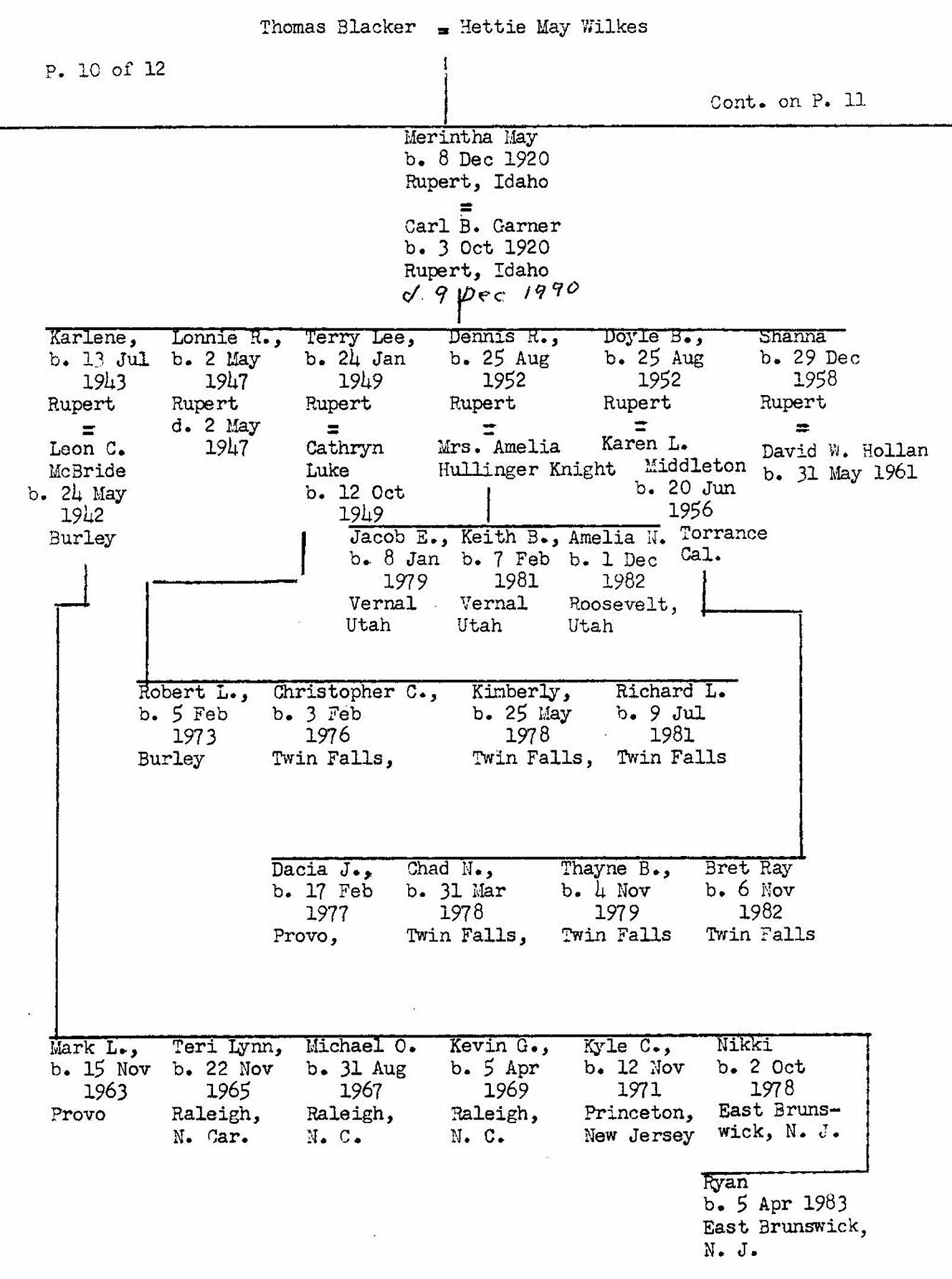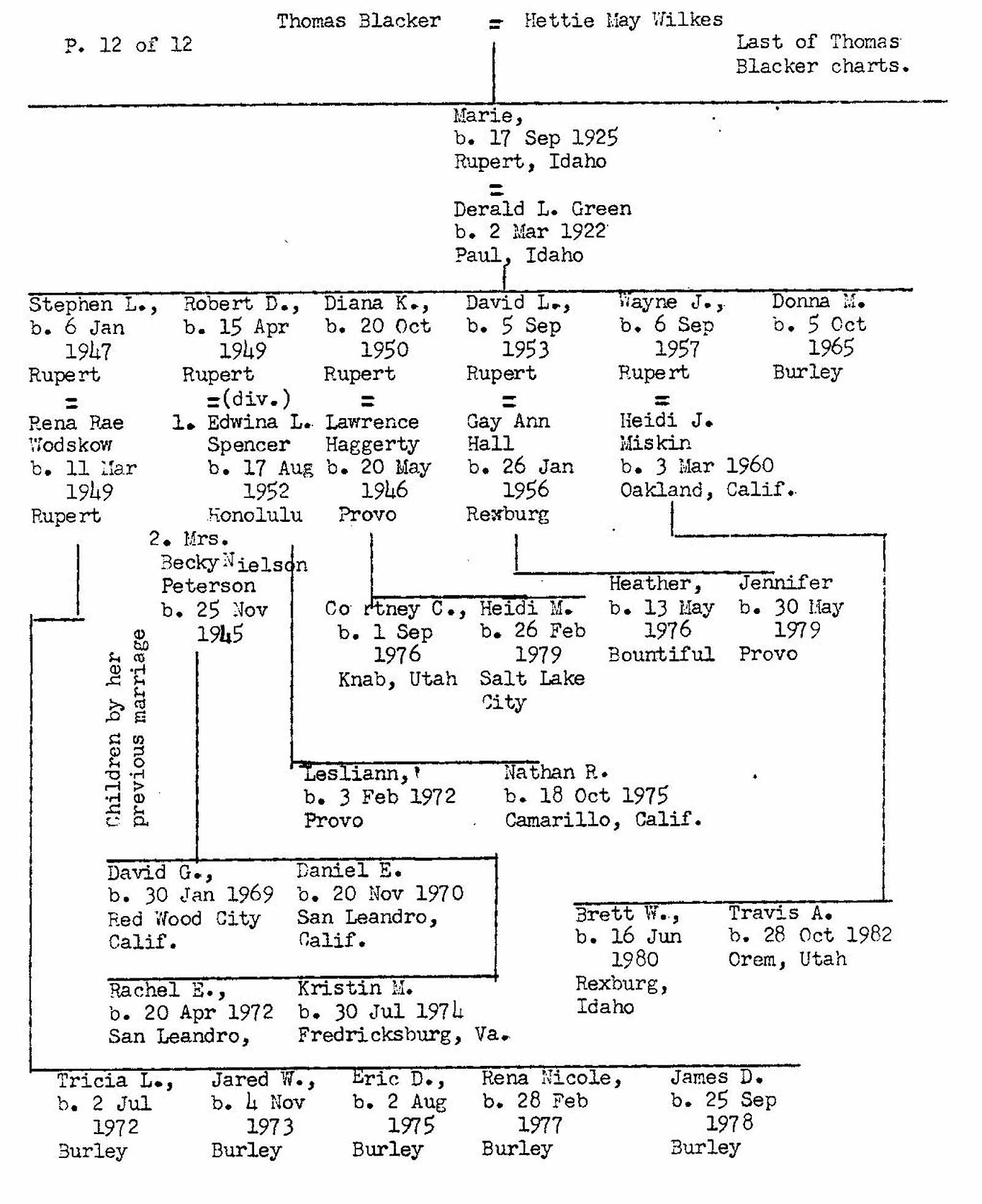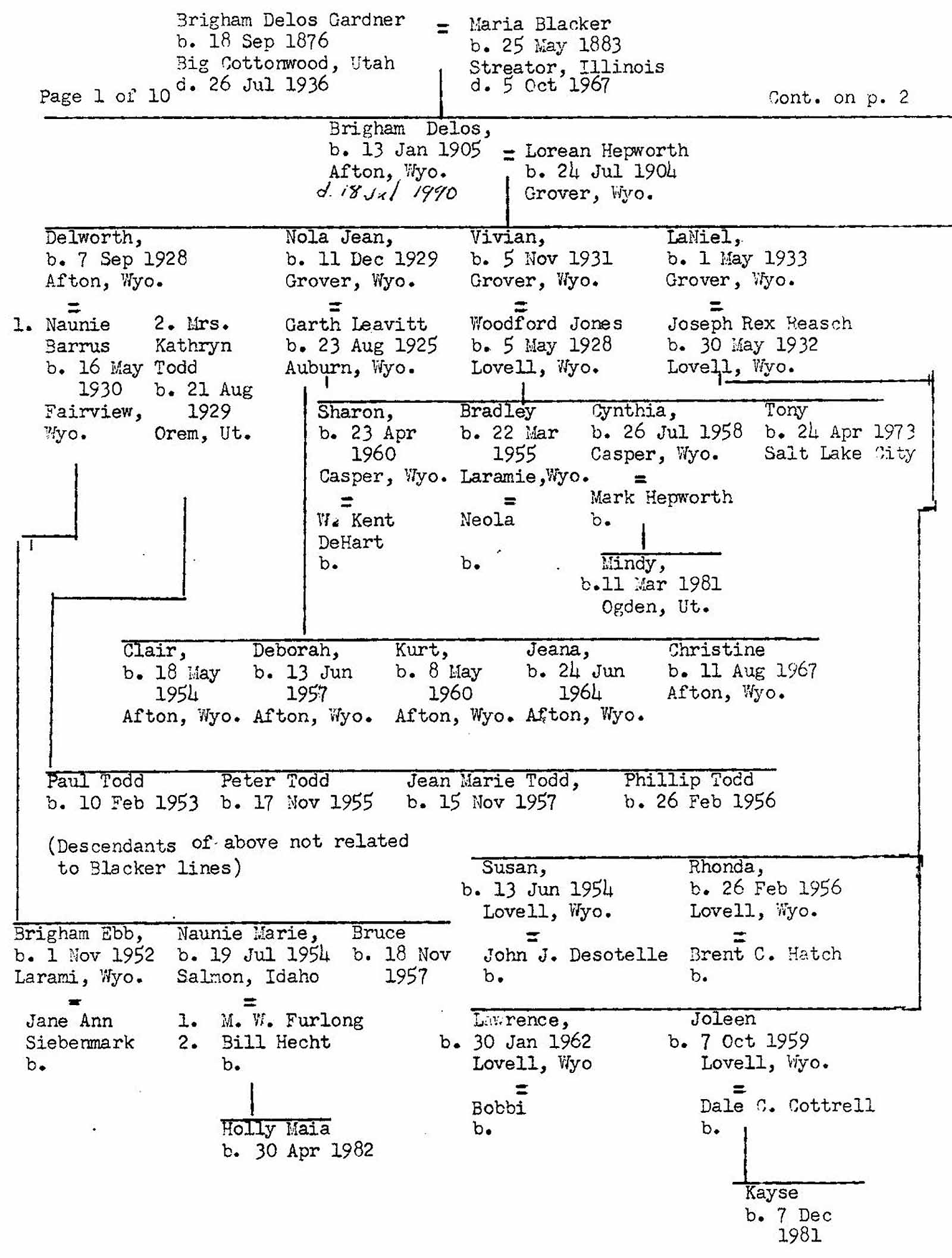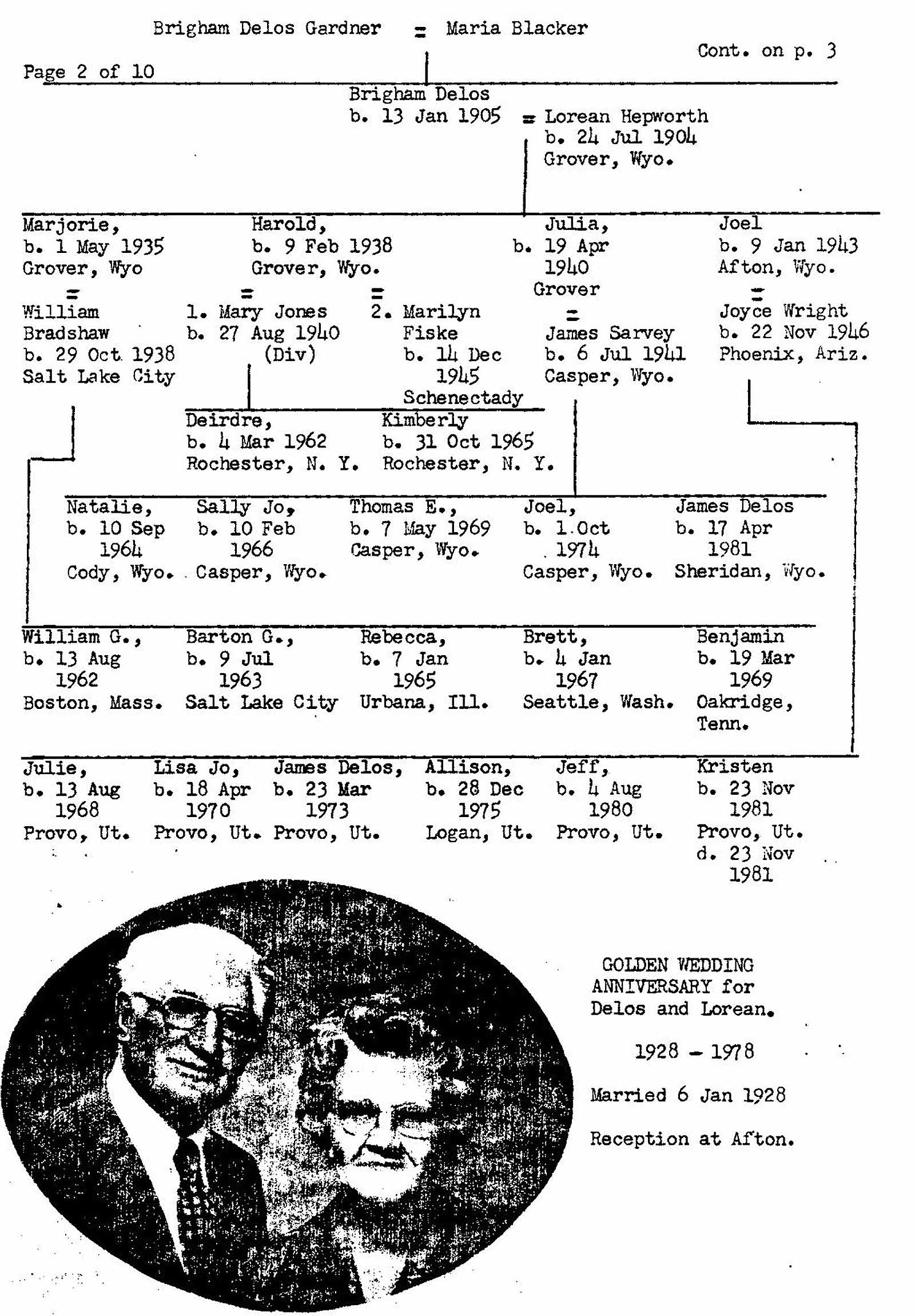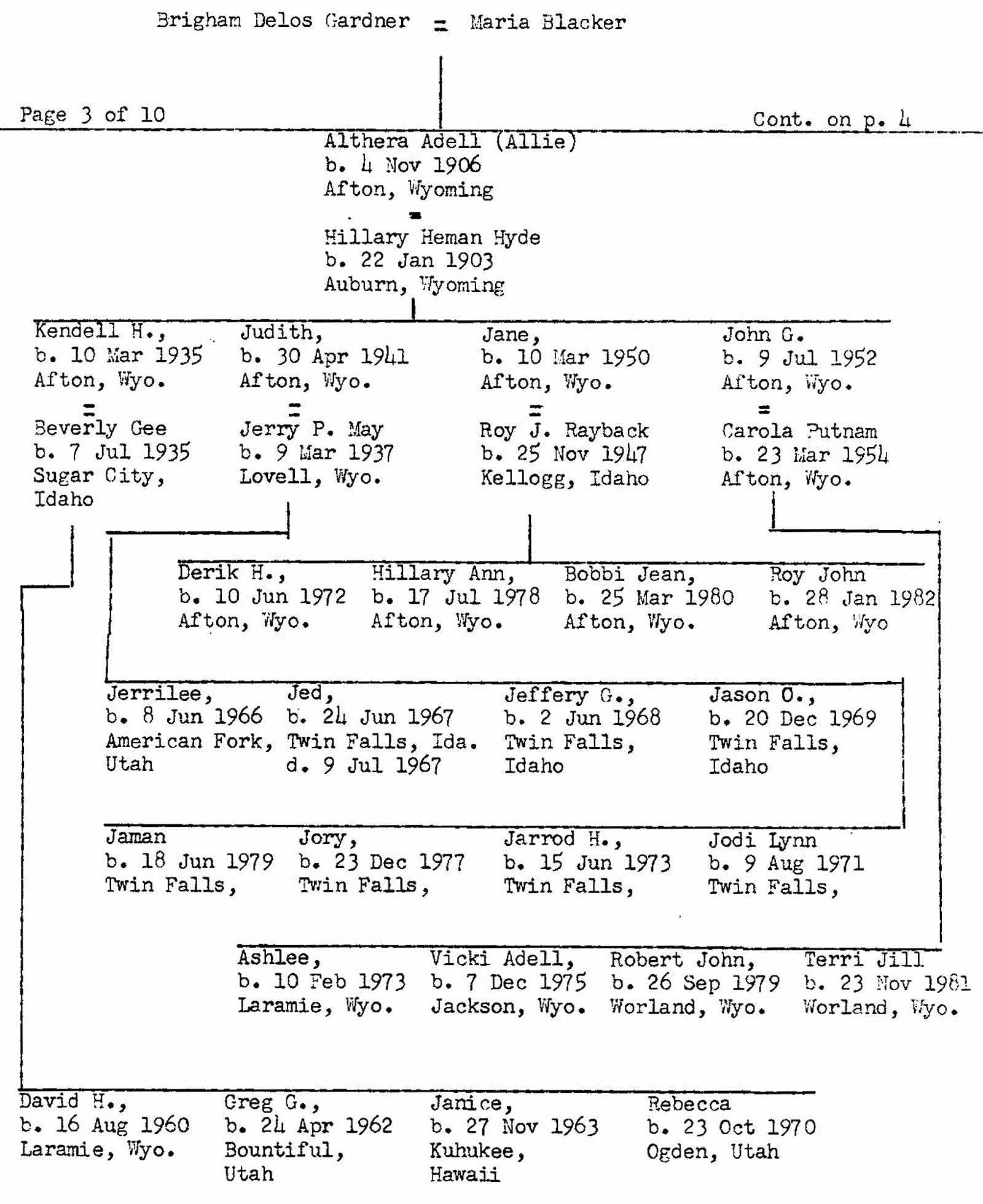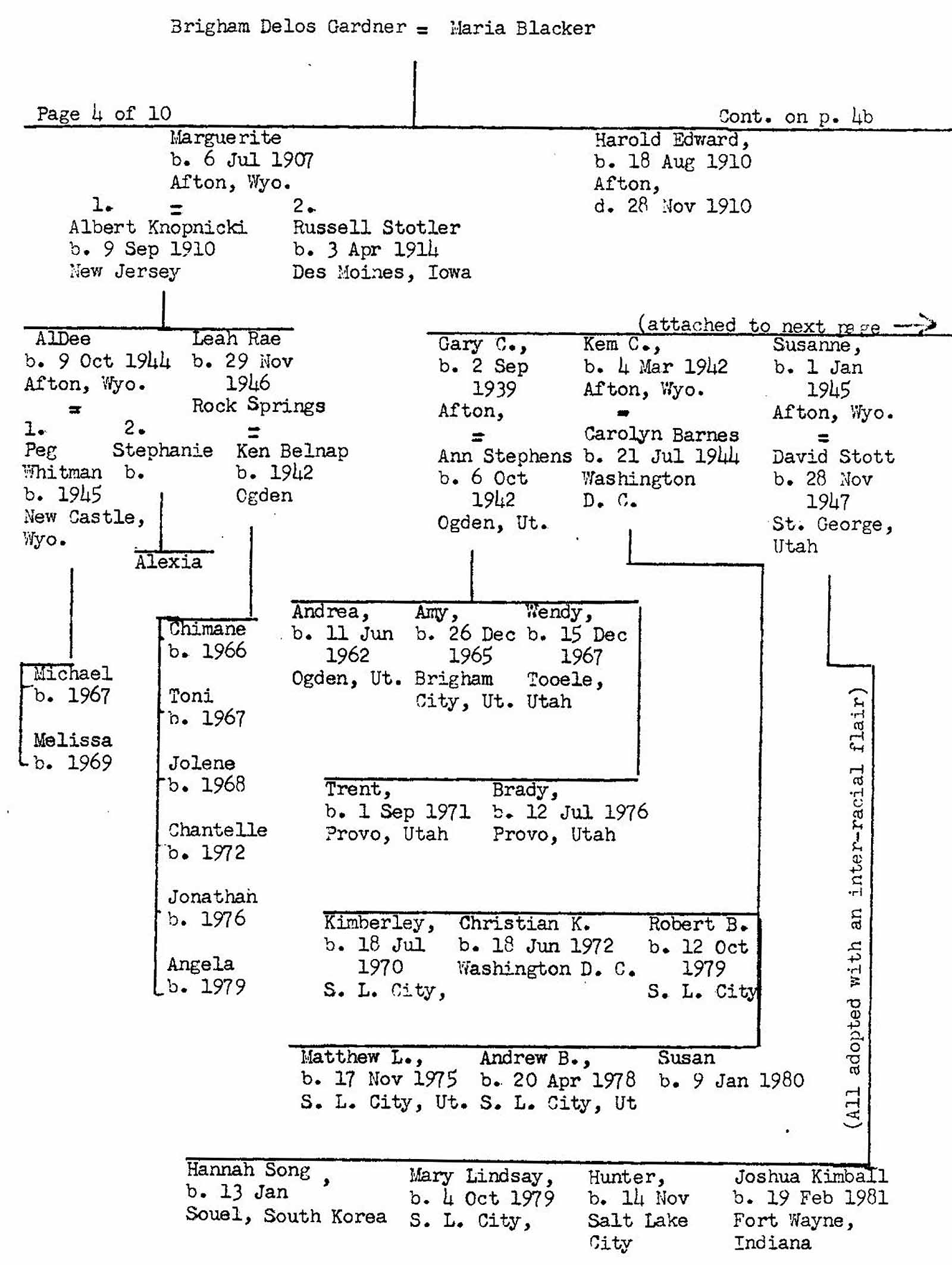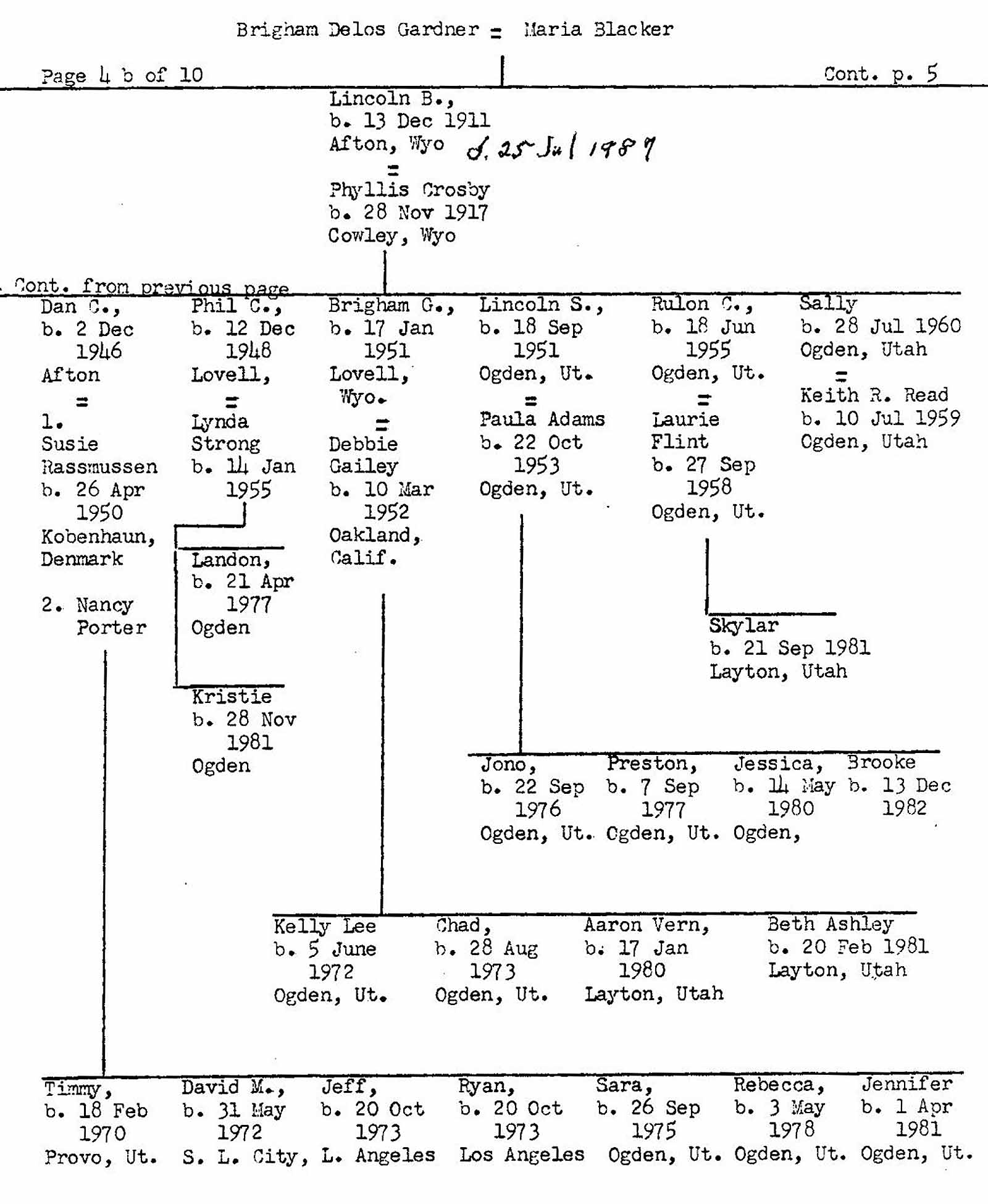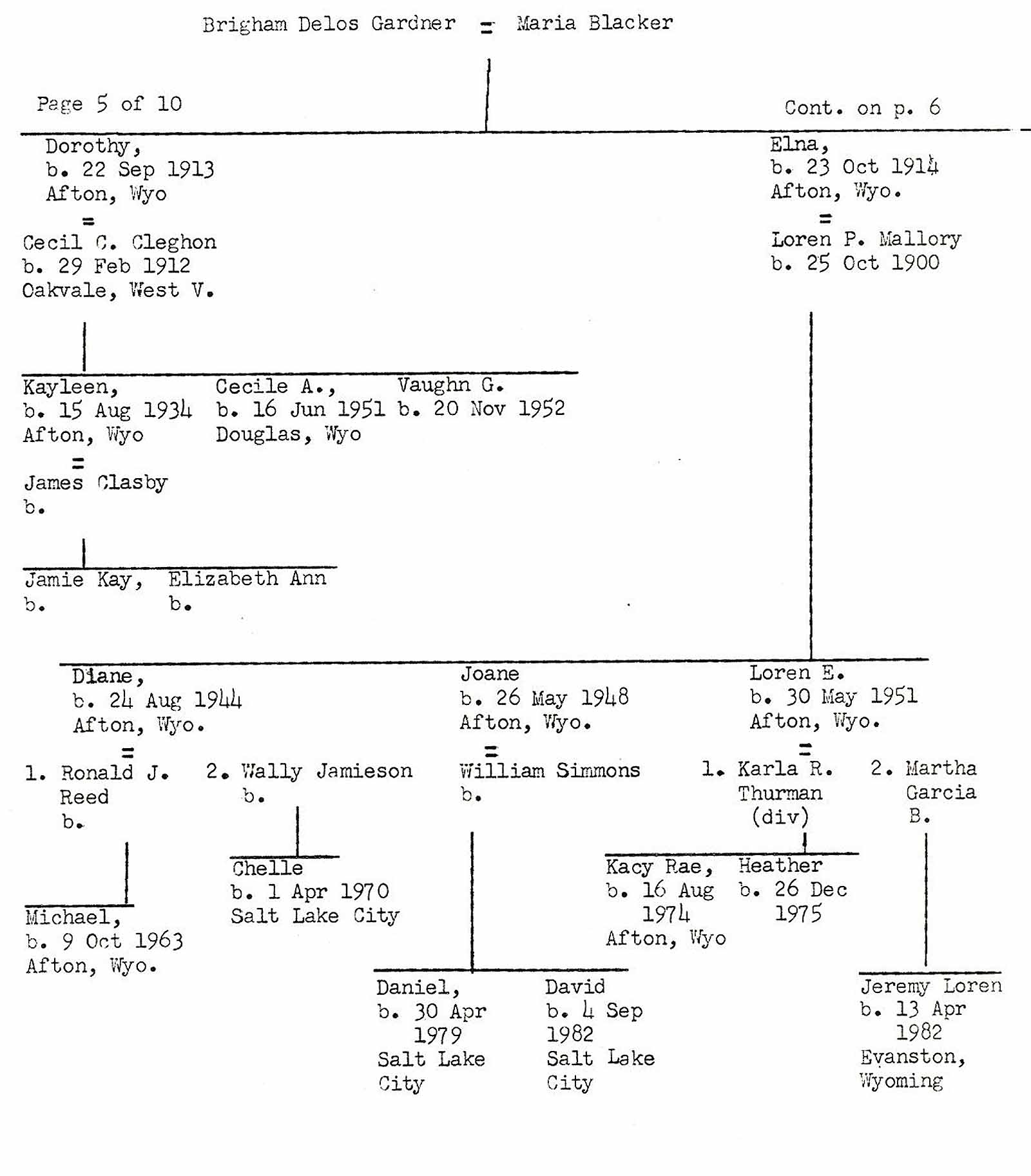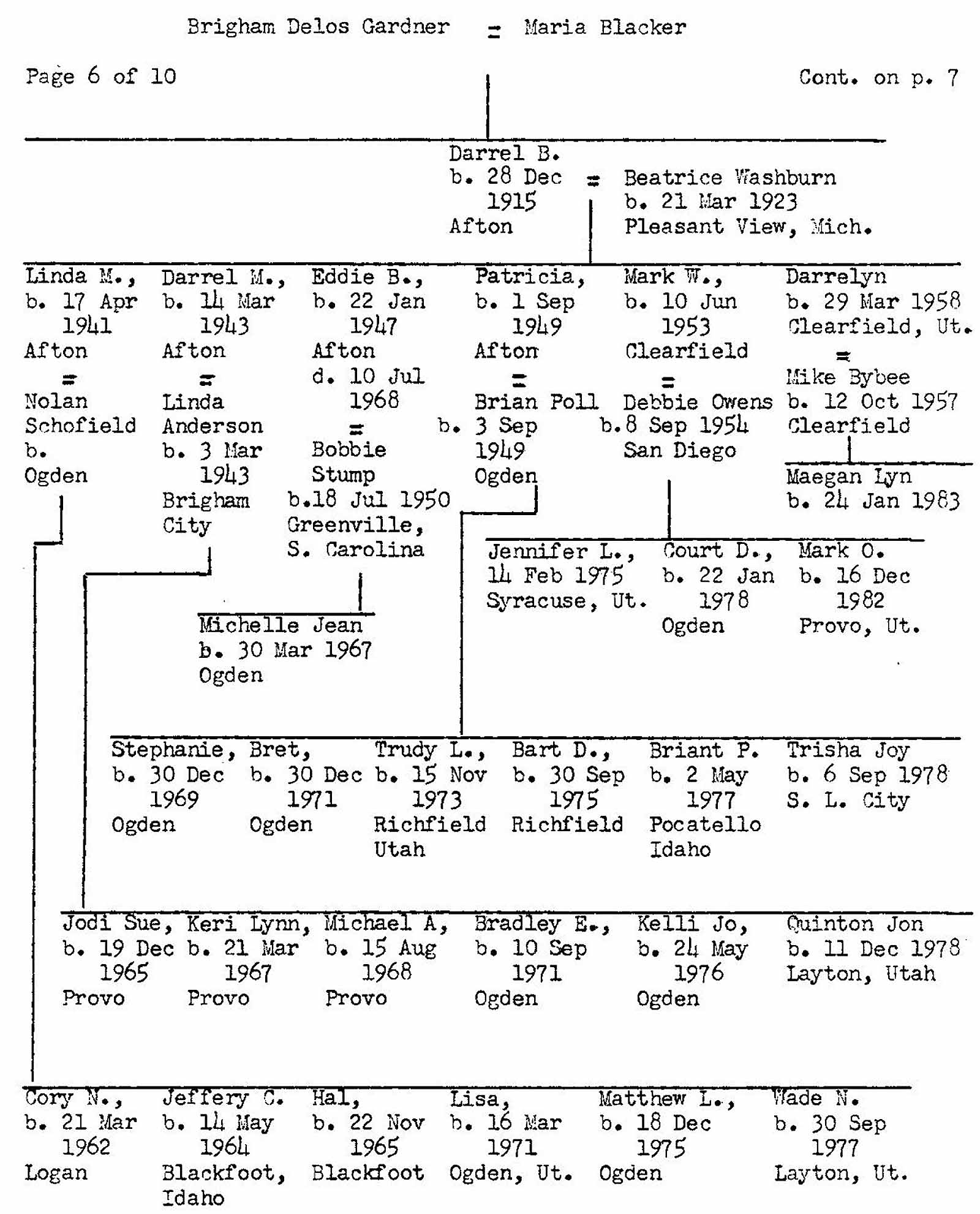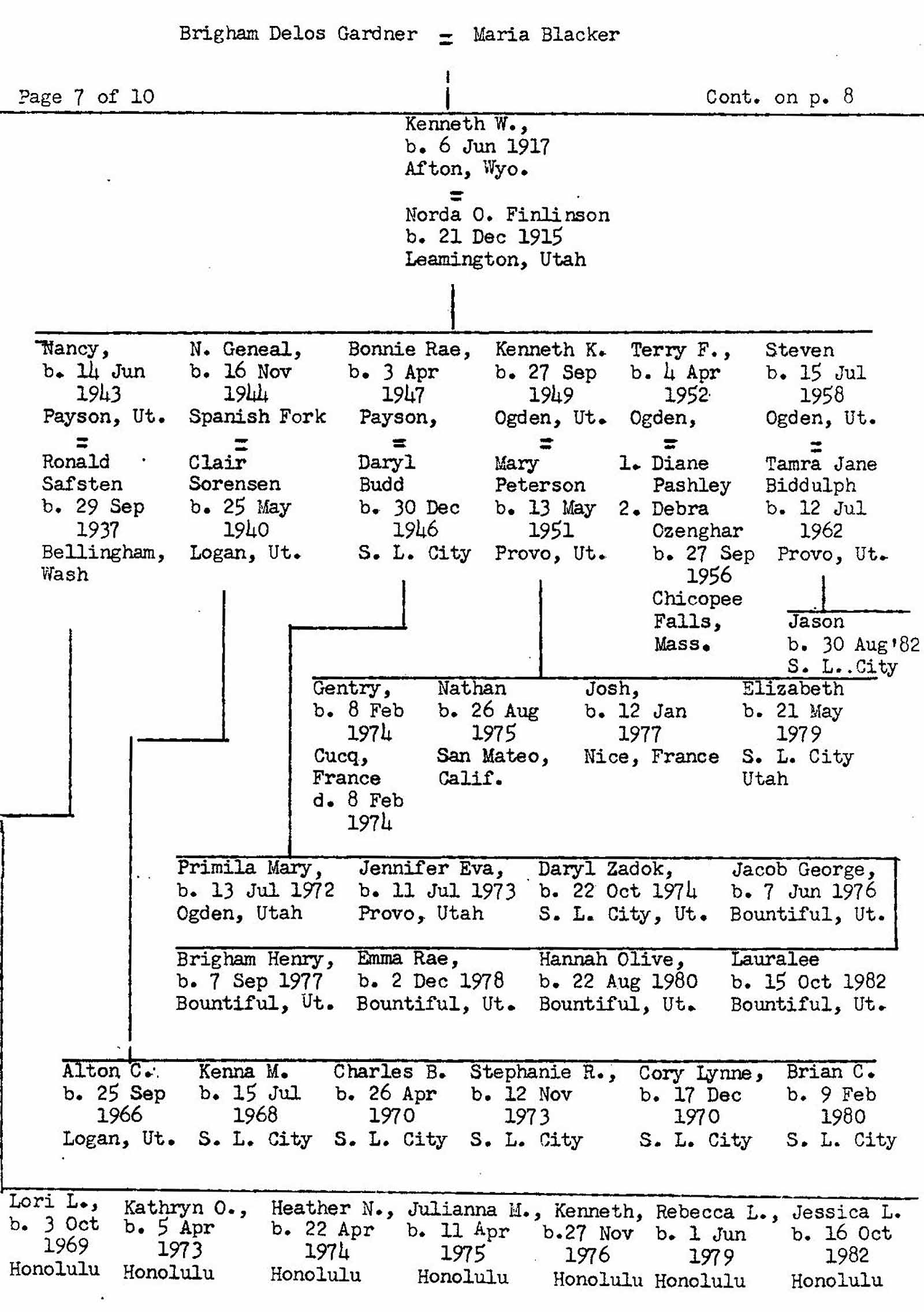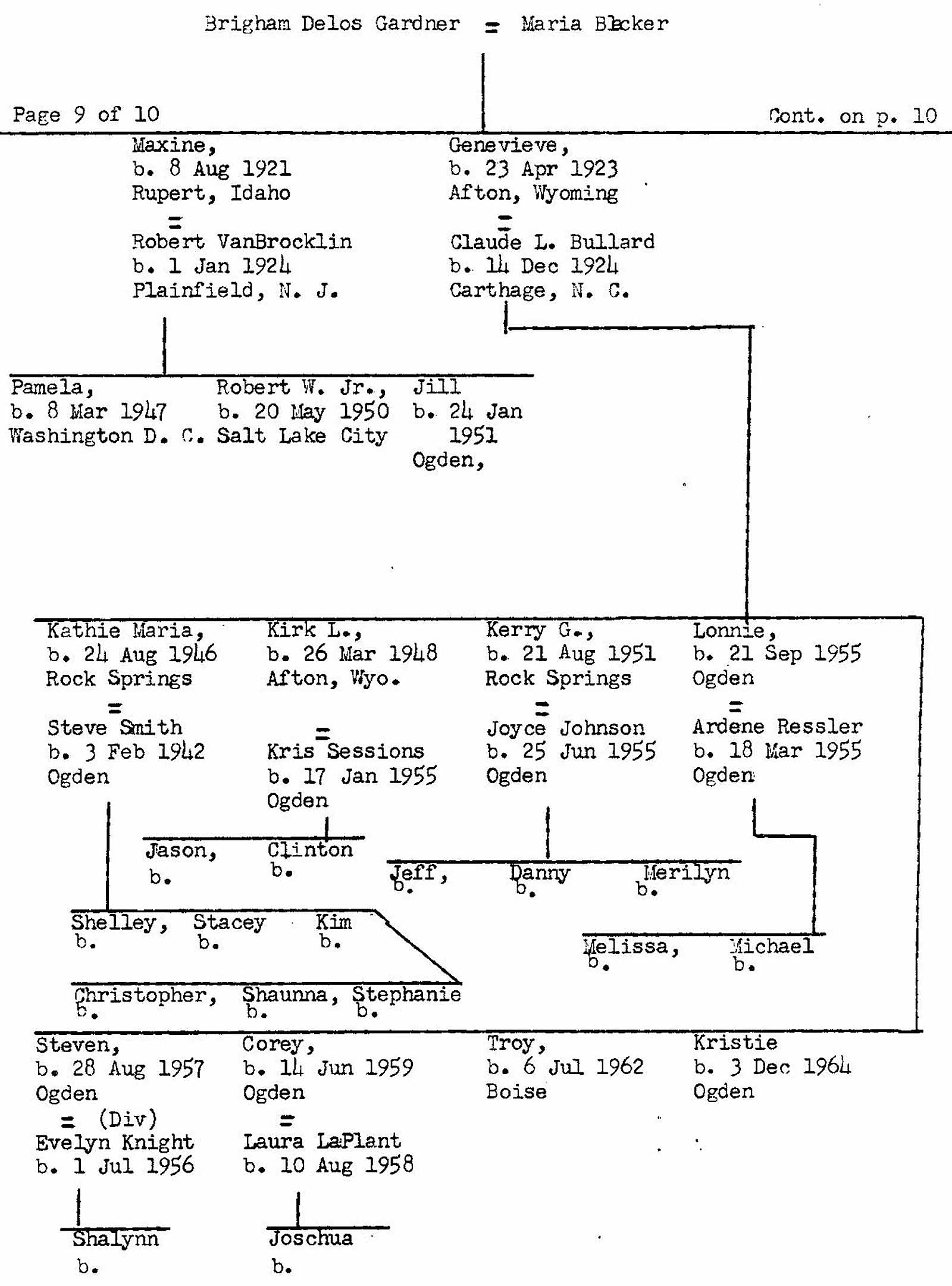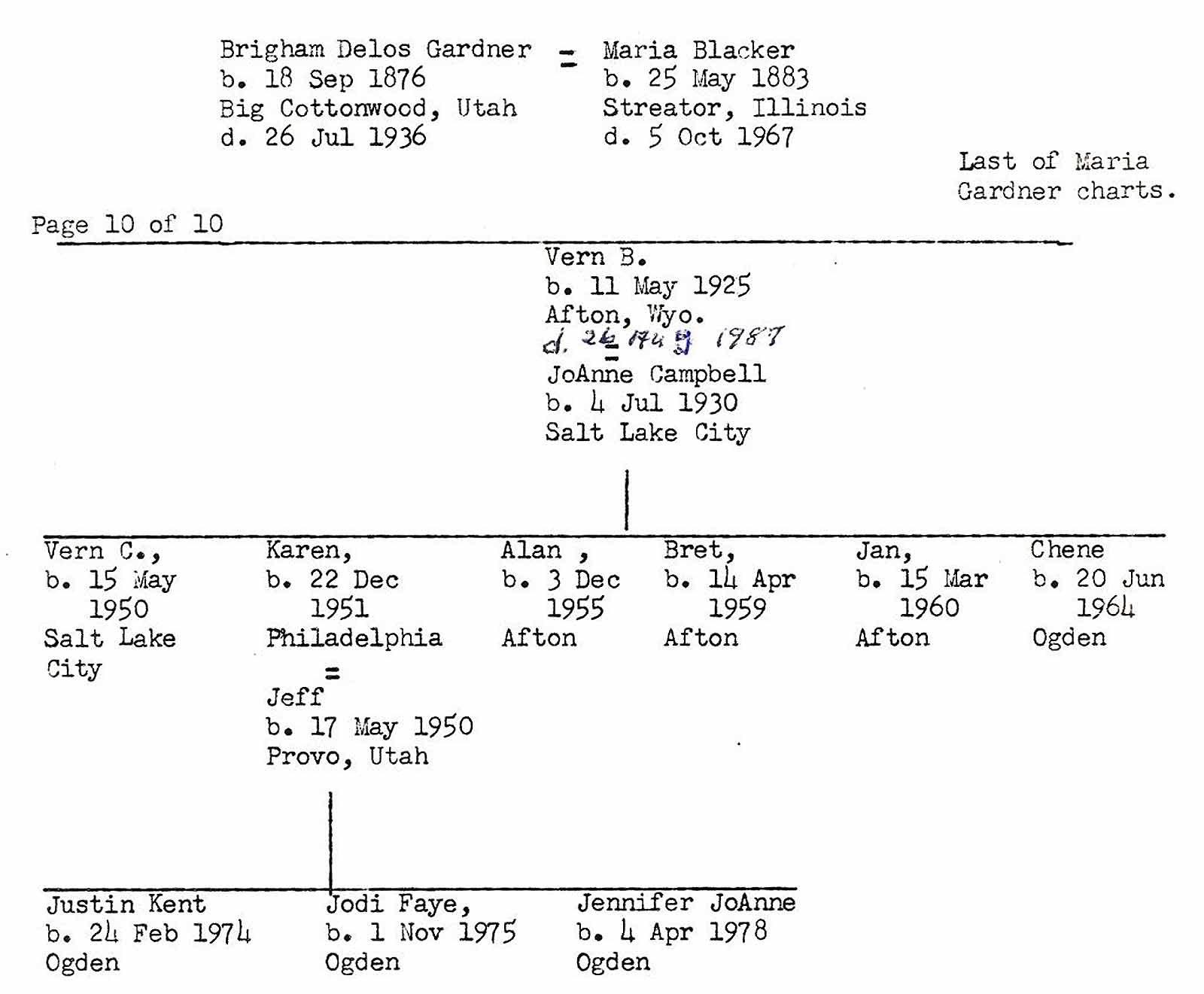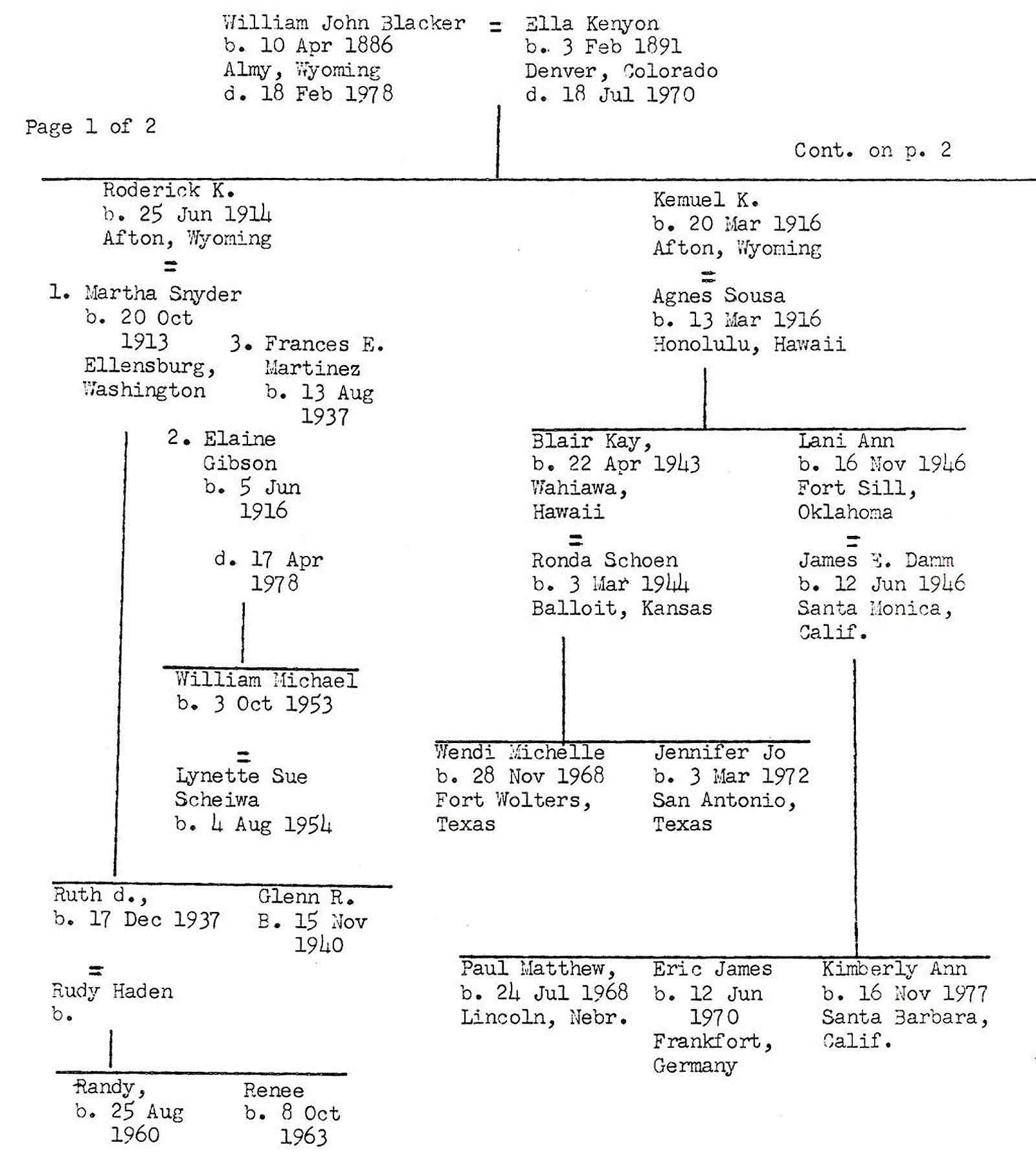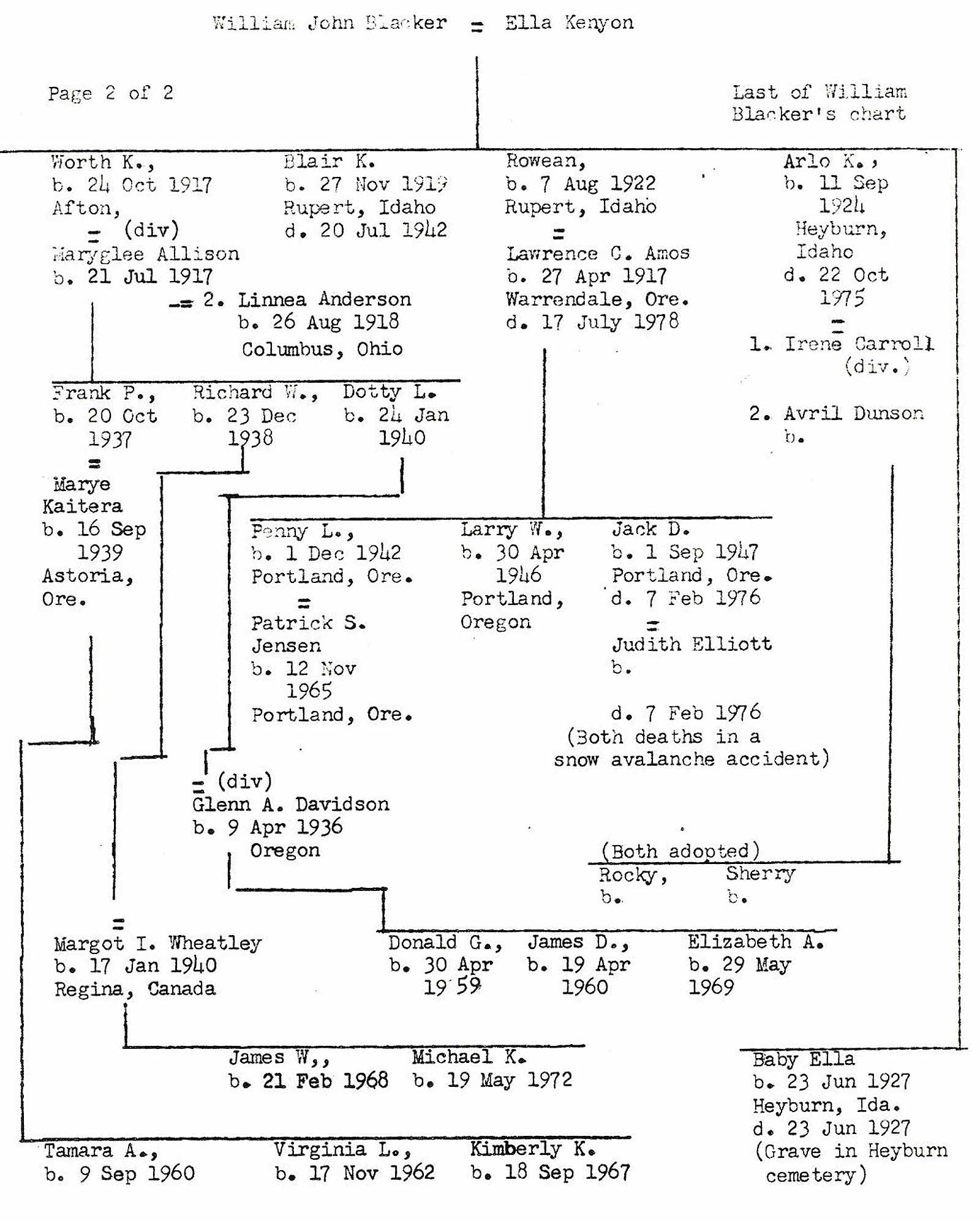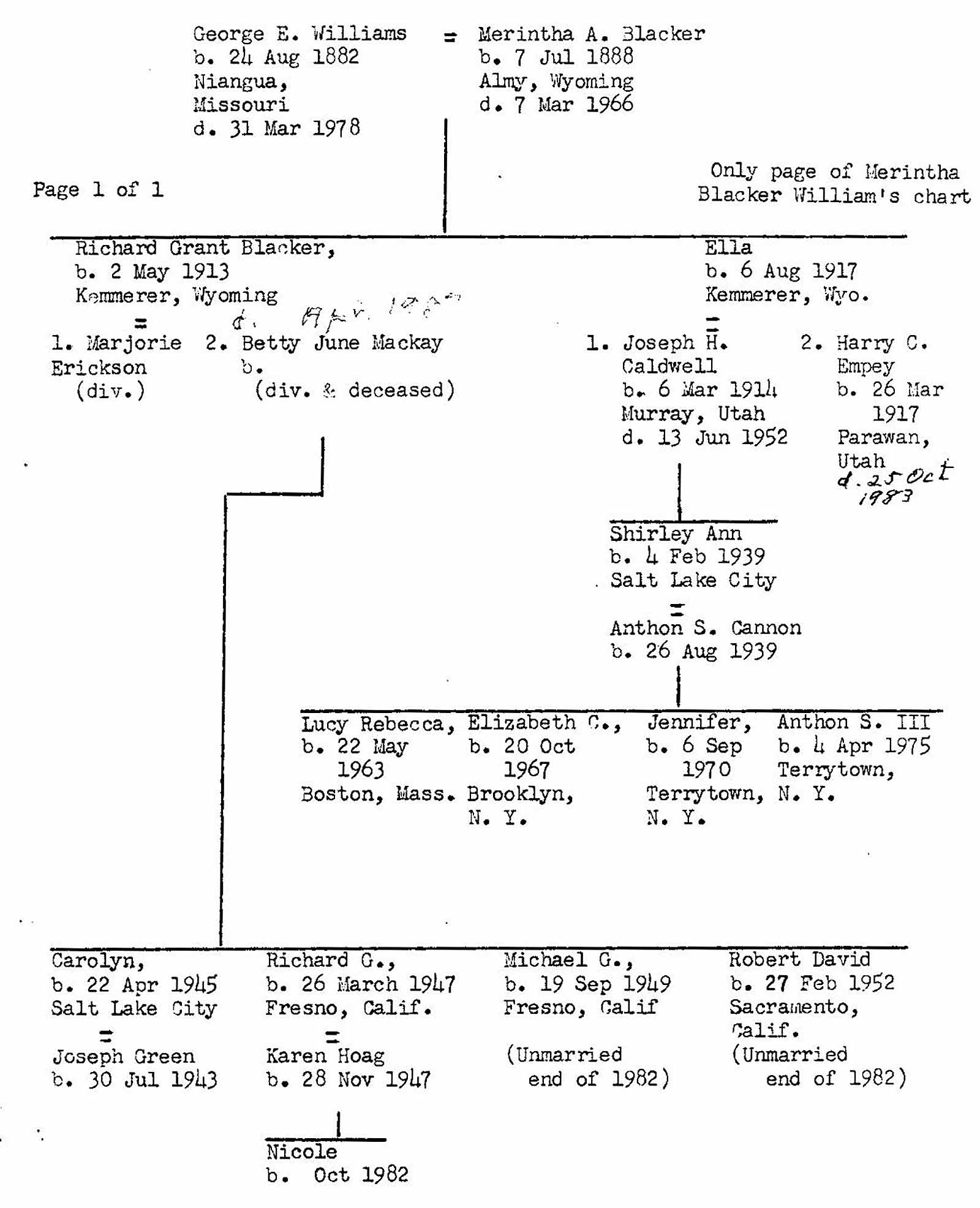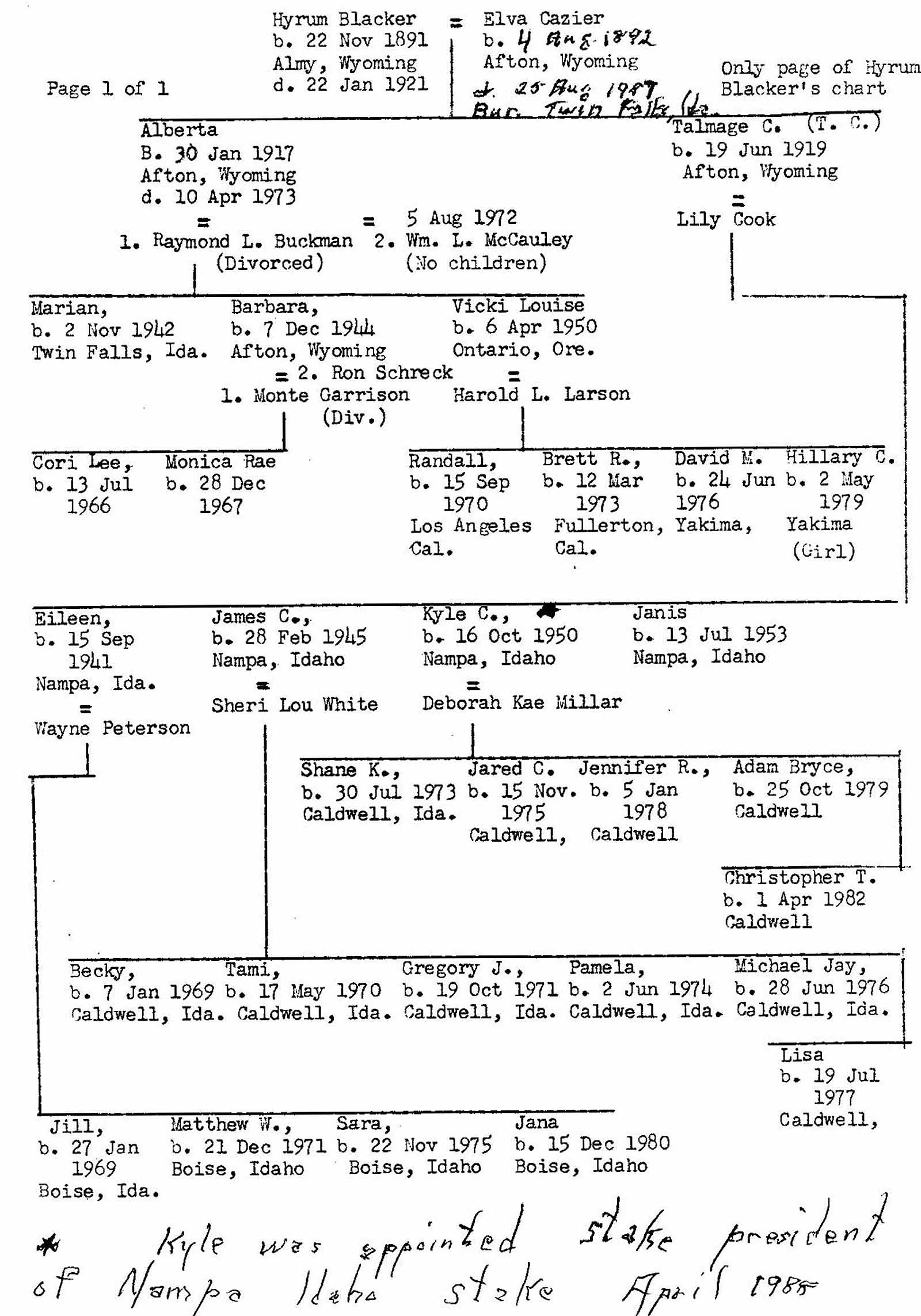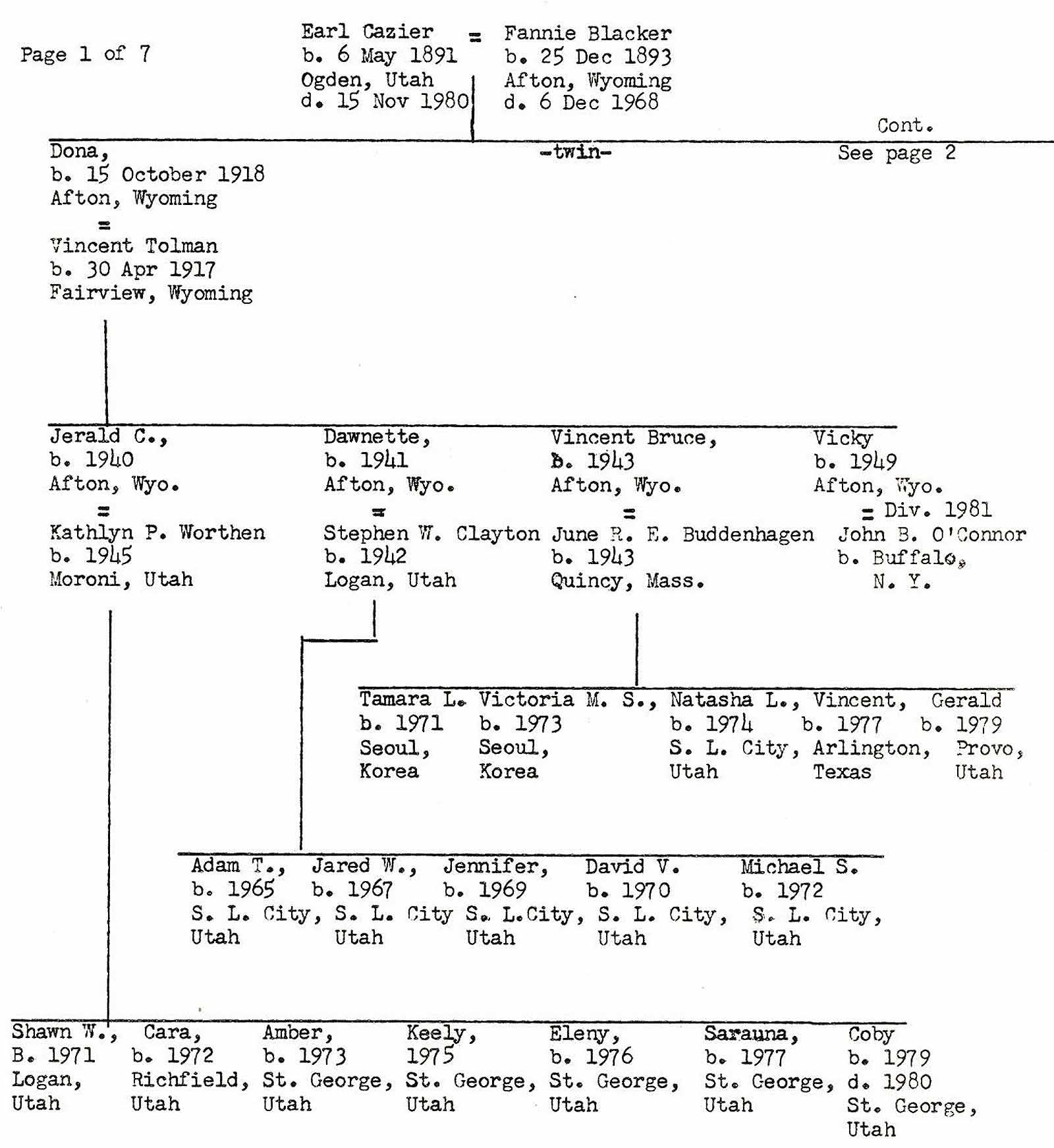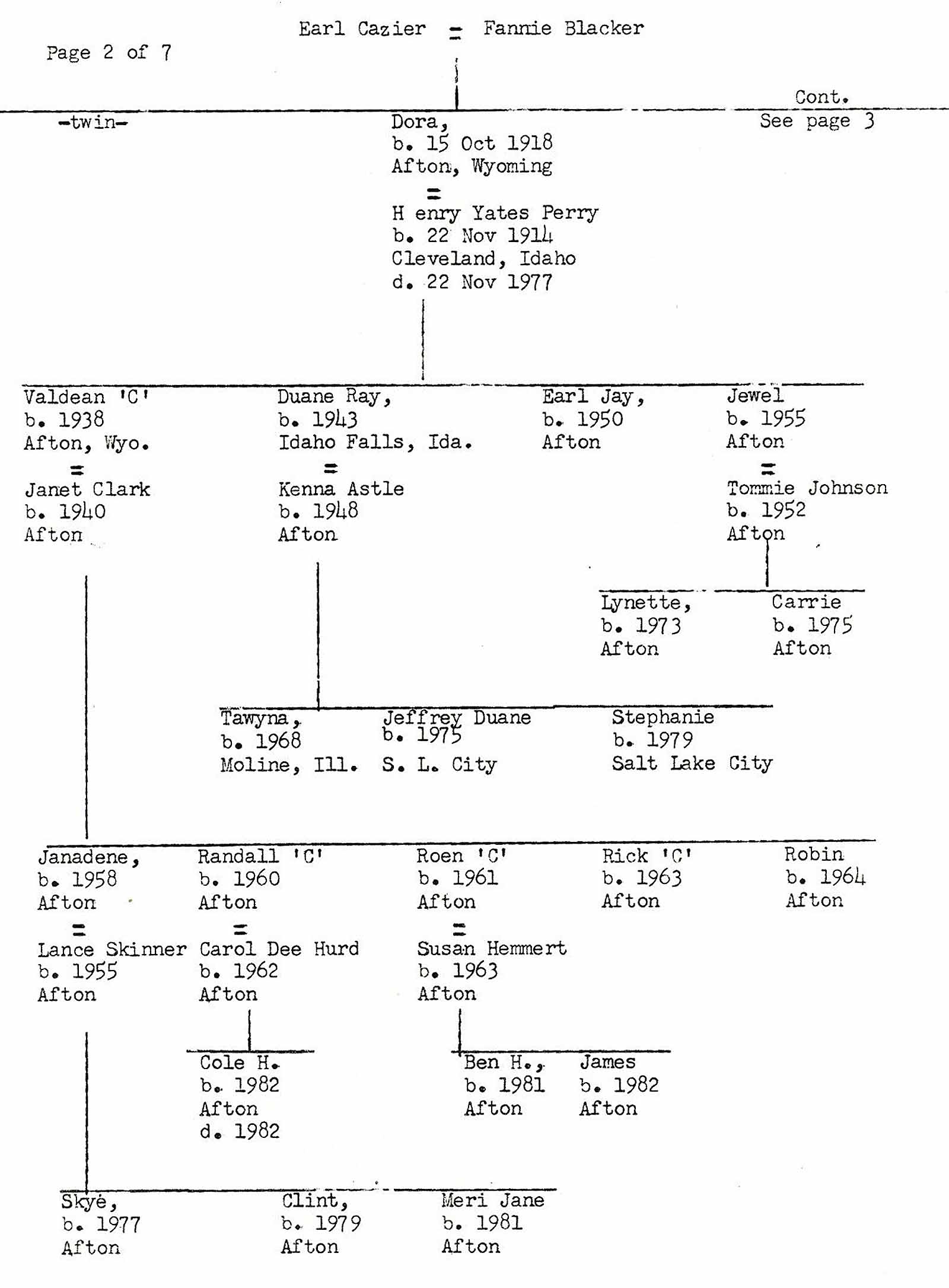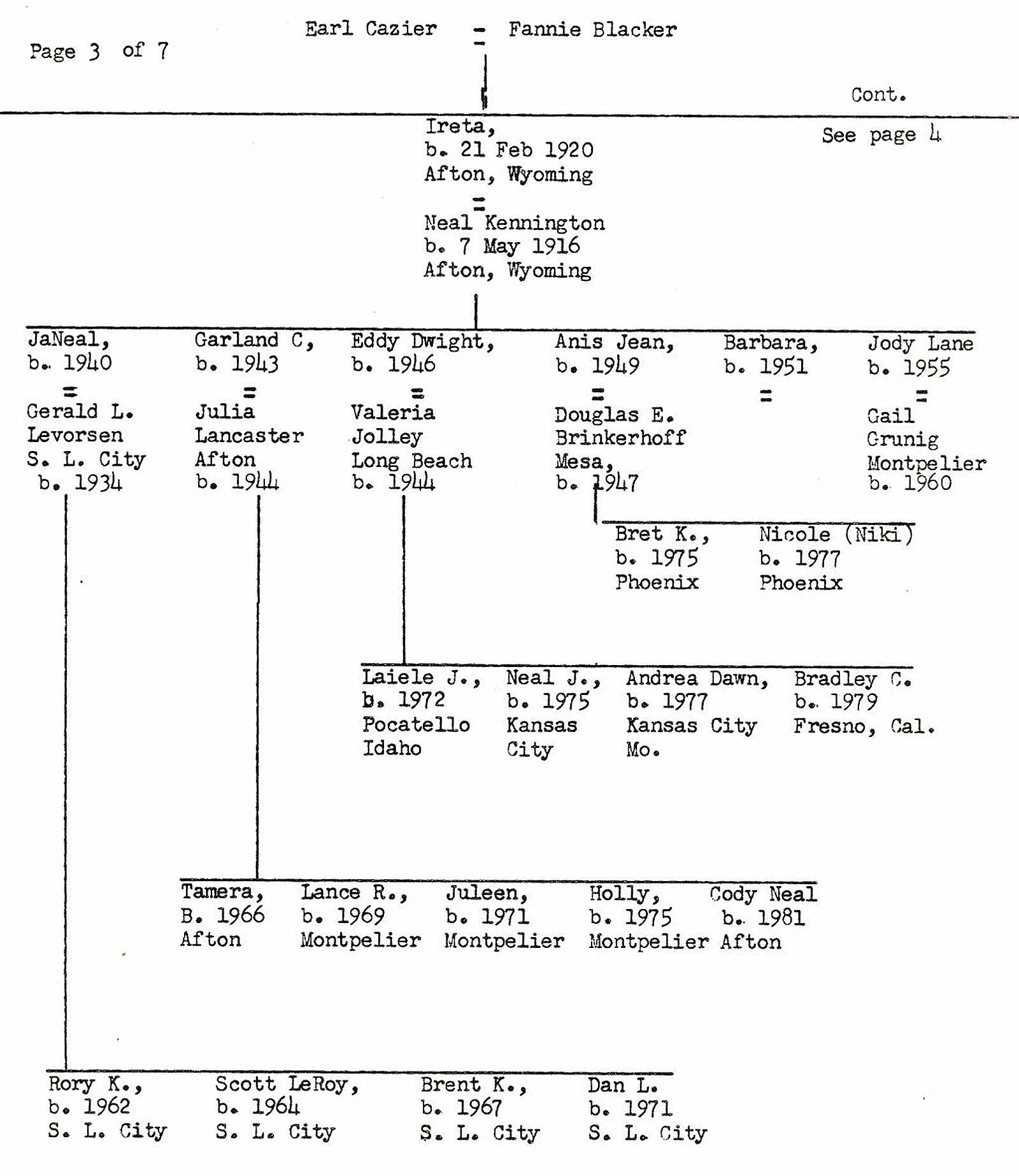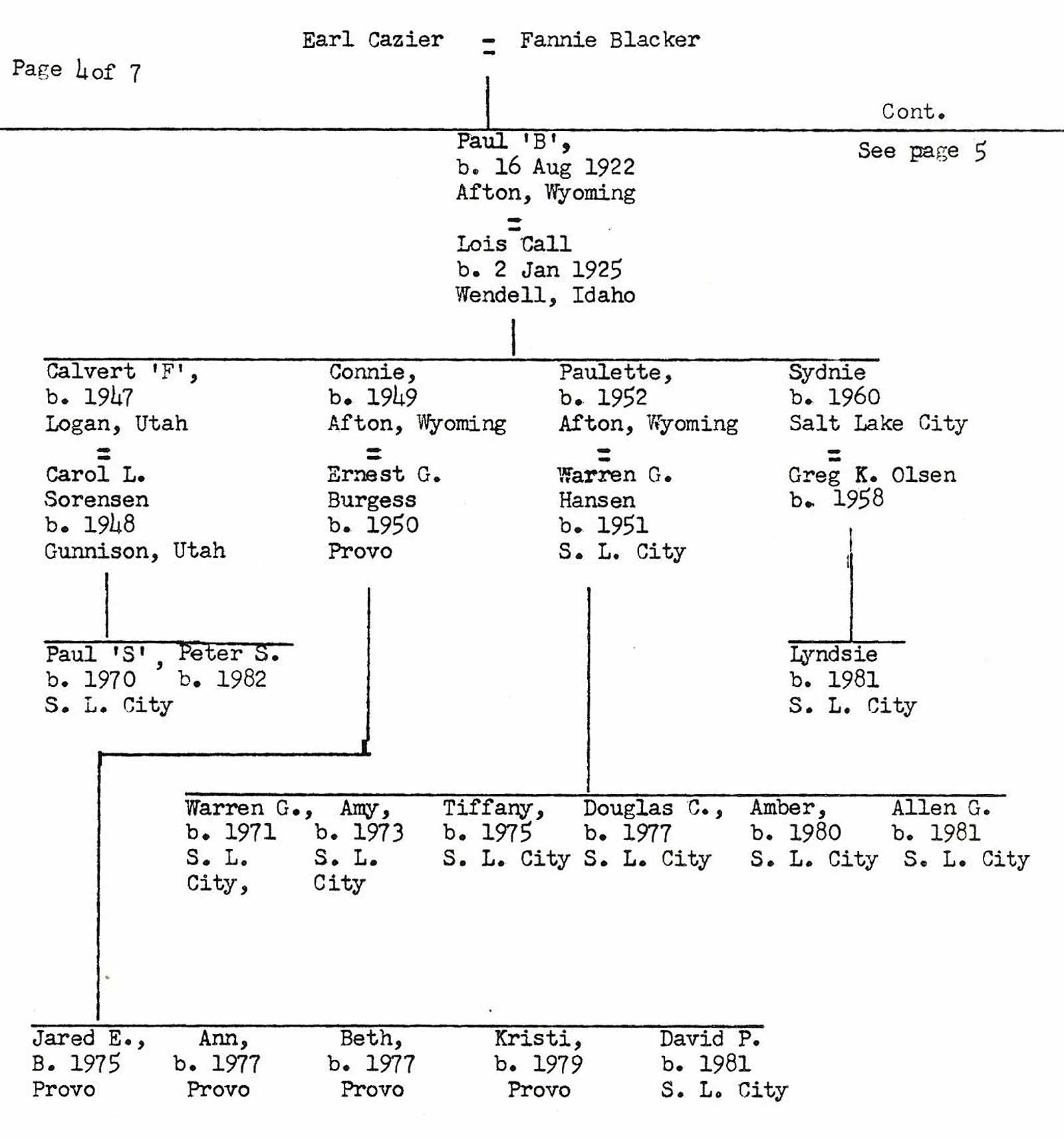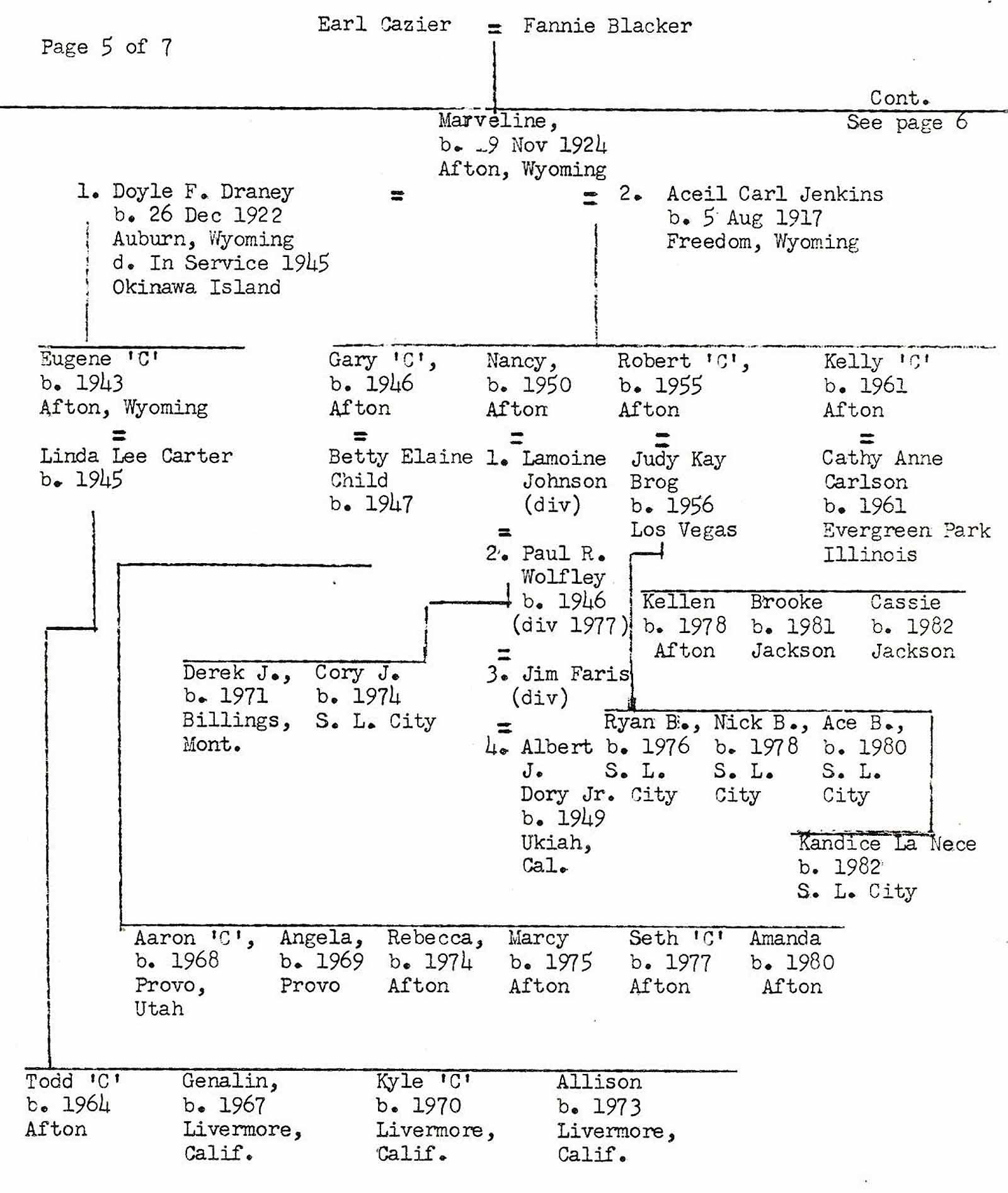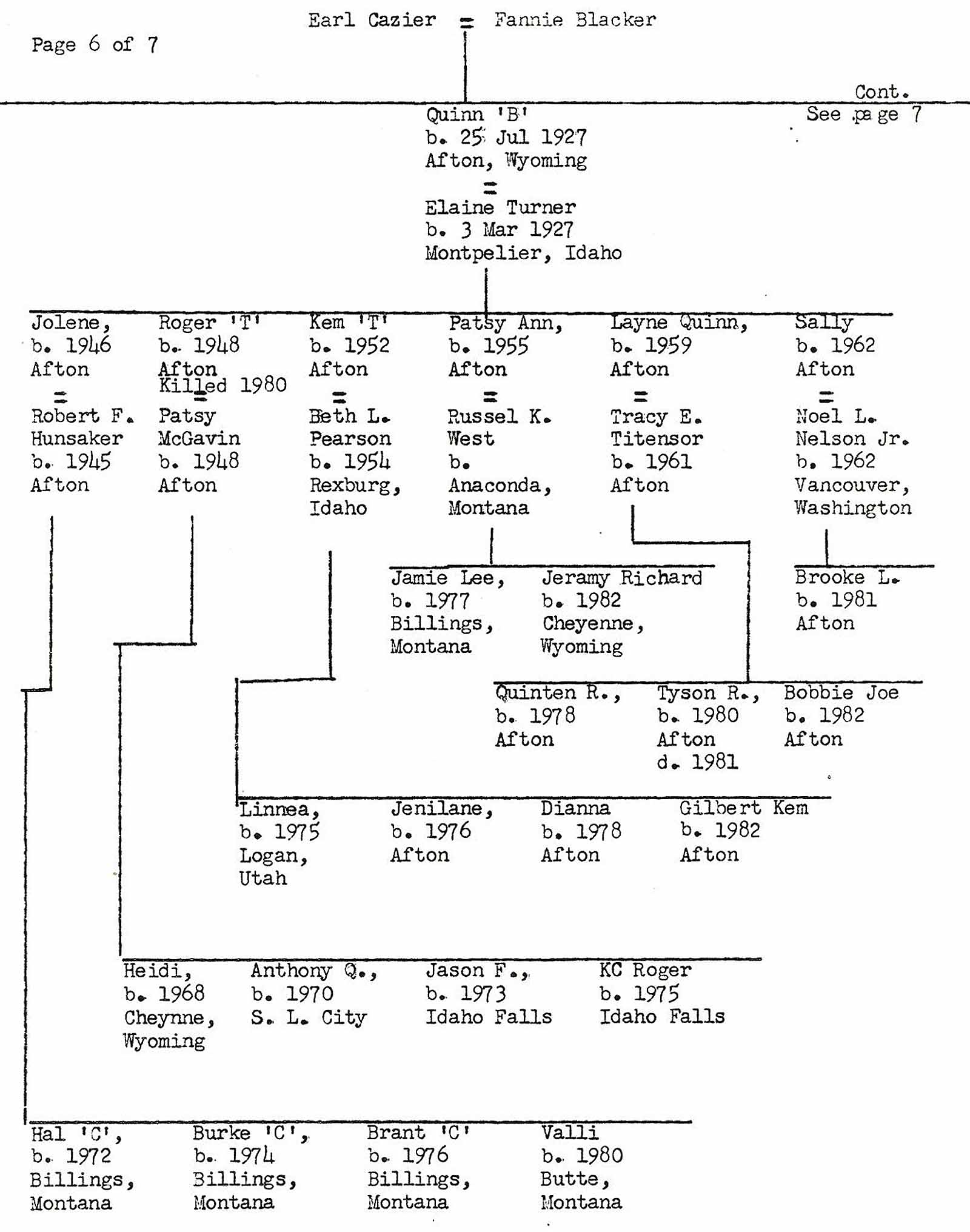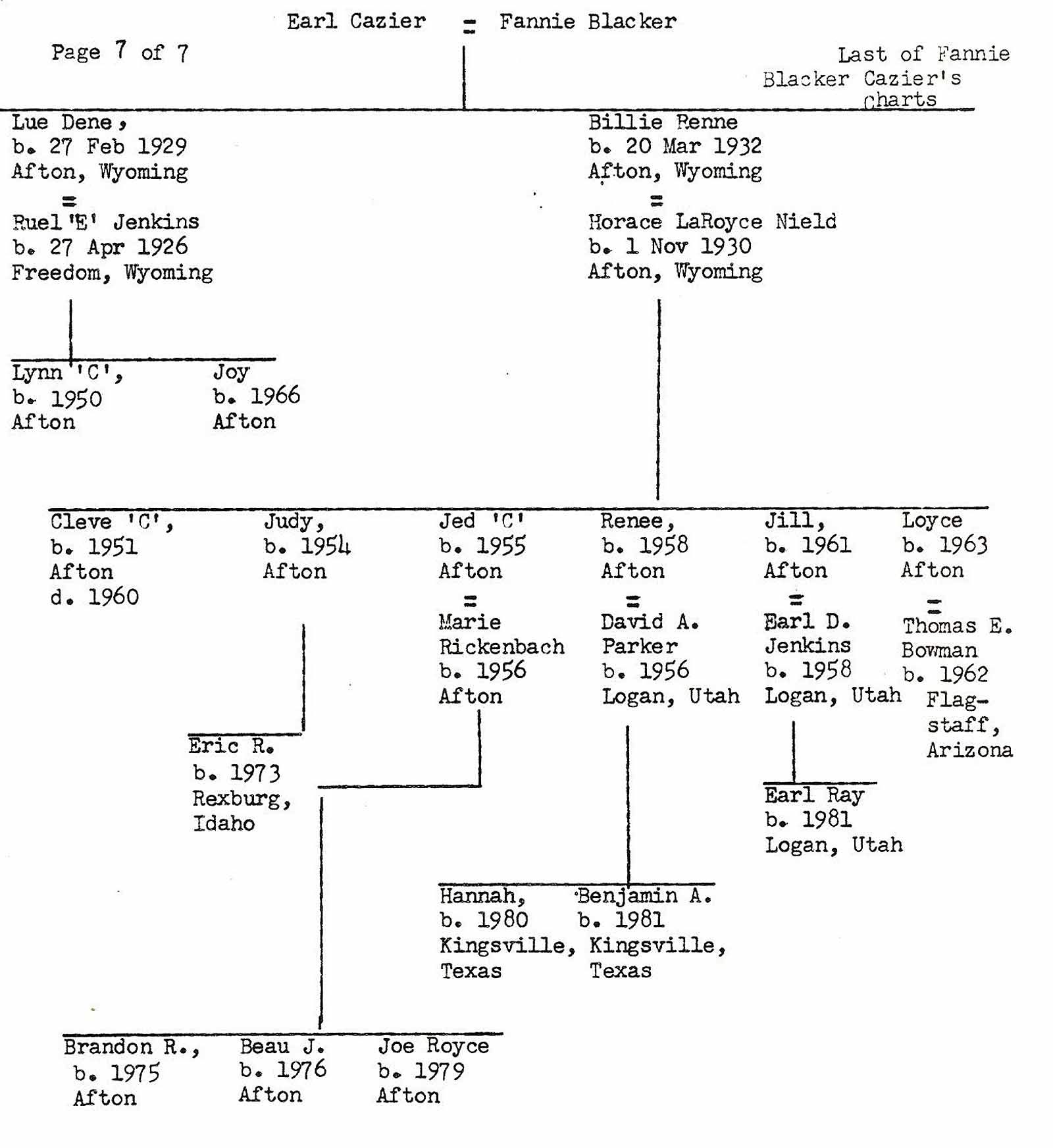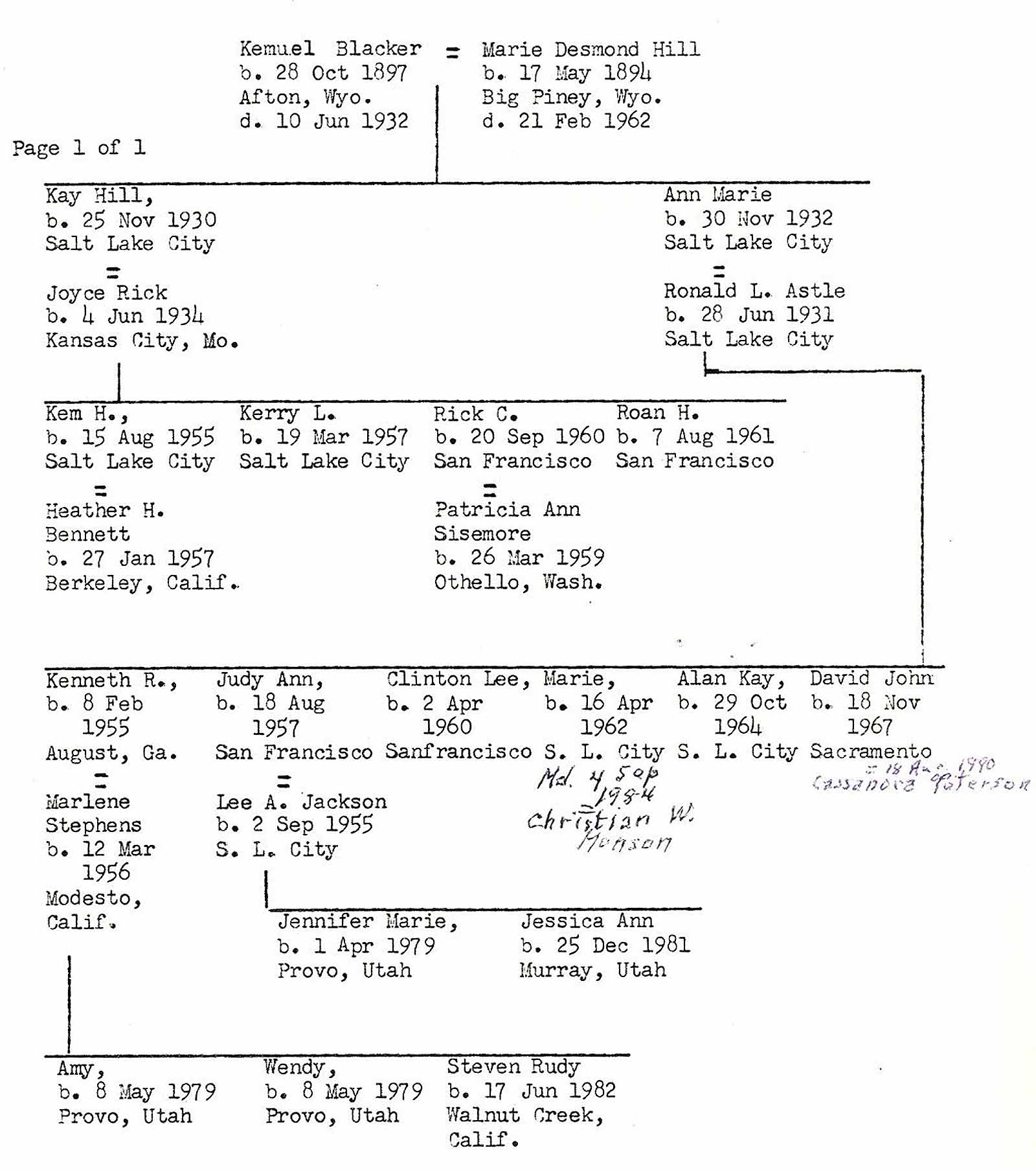And so, all too soon, our brief review of our Blacker family comes to an end. It has been but a brief introduction - so little is actually known. We have an assurance they lived for we have followed them for ten generations but that brief period of time - as history goes - is not long, only from the present, now into 1983 back to approximately 1650, 3 1/3 centuries and this far on but three lines of our multiple-pronged pedigree chart. On far too many lines we trace back not over half that span of time. On the Blacker portion of our families we can't yet name fifty individuals who fit onto our pedigree chart. How insignificant that number as compared to the number of places we would have on our pedigree chart if it went back one thousand years and one thousand years is but 16 2/3% of the biblical amount of time of mankind since our first parents, Adam and Eve.
Let us proceed from another angle: By rule of thumb, three generations will cover approximately a century of time. Genealogical experts have set up a rule of thumb and have determined that the father of the middle child of a family averages roughly to be 32 years of age when that middle child is born, again by rule of thumb, three generations of each 100 years. On an average pedigree, then, for every three generations, a century of time is consumed.
Note that every name on a pedigree chart is actually a blood-relative to the name which commences the chart. This most recent person on the chart, then, will possess genes in varying amounts from every person ahead of him chronologically. (Can't refrain from a pun: Do you see why the world is no mixed up?)
A matter of little arithmetic: Were all lines of your personal pedigree extended back to the year 1500 there would be 16,032 persons listed in that last generation alone or a grand total on the chart of 33,000 individuals. An average family, unless one had the fortune - or misfortune - of tying into royalty, research sources would usually run out by 1500 A.D., a period of approximately 500 years. Five hundred years at three generations per 100 years actually total but 15 generations.
While we are playing games, let's pretend we are 17 years further down the road so our calendar will read 2000 A.D. From that year a newcomer starts his pedigree. In units of 1,000 years for easy figures, let's chart back to Adam and Eve. In doing this, we must remember that this human family has had two starts which our pedigree chart will have to show. Actually the first chart will reach an apex at some undetermined point in its structure for, at that point its broadness will need start to diminish until it recedes down to Noah and his wife. From Noah it will need expand itself to a second undetermined point when it, again, will contract to a point, Adam and Eve.
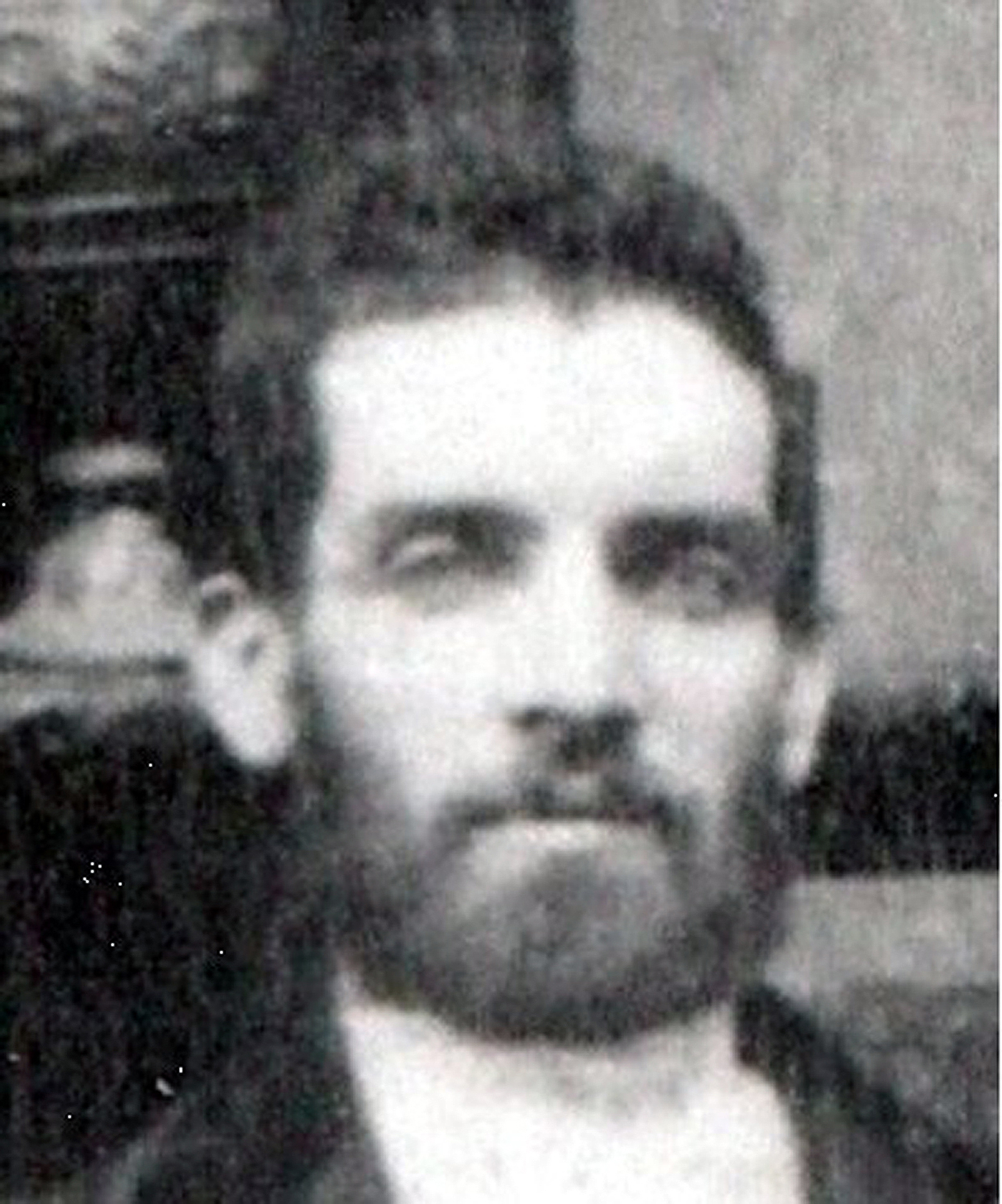
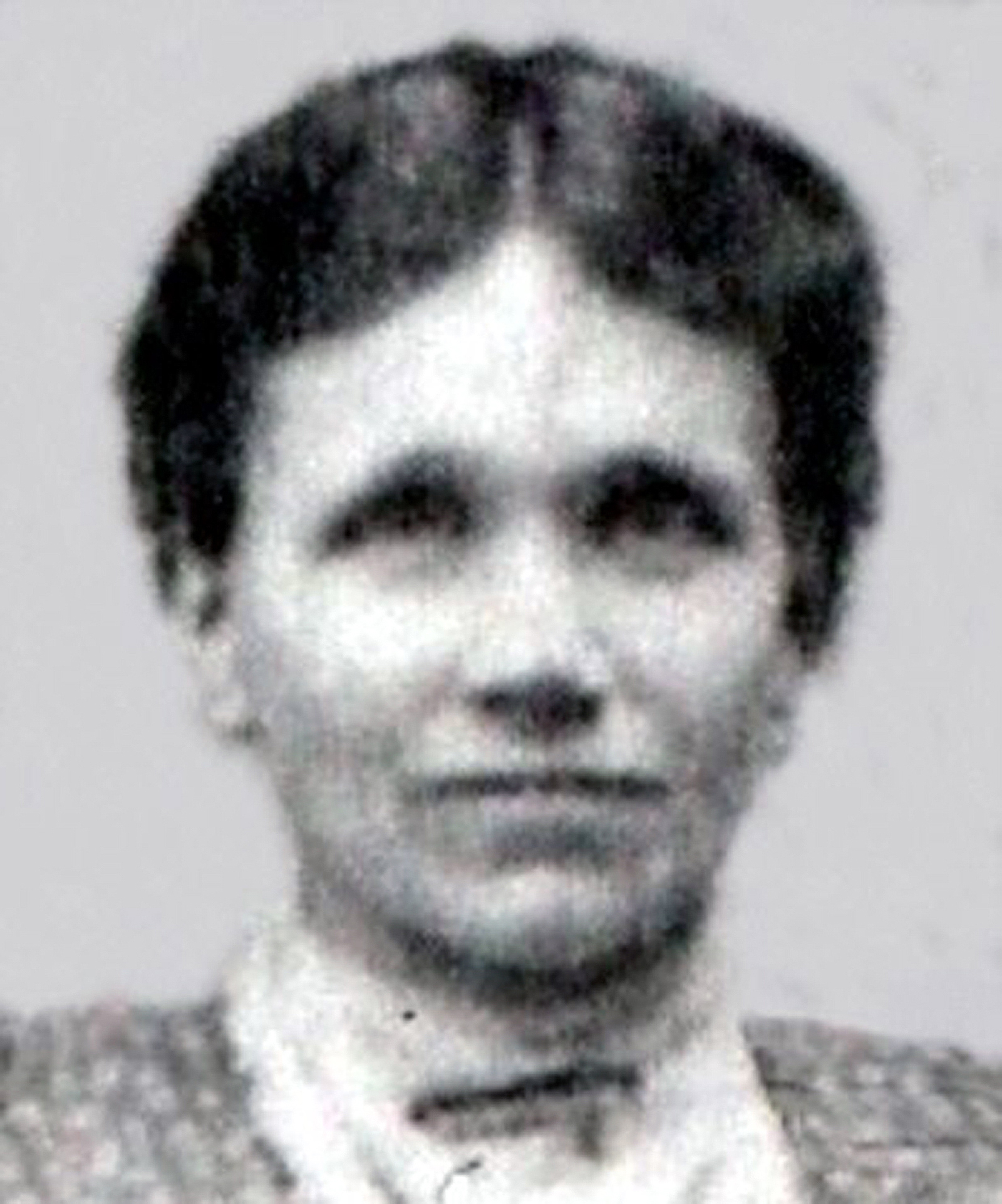
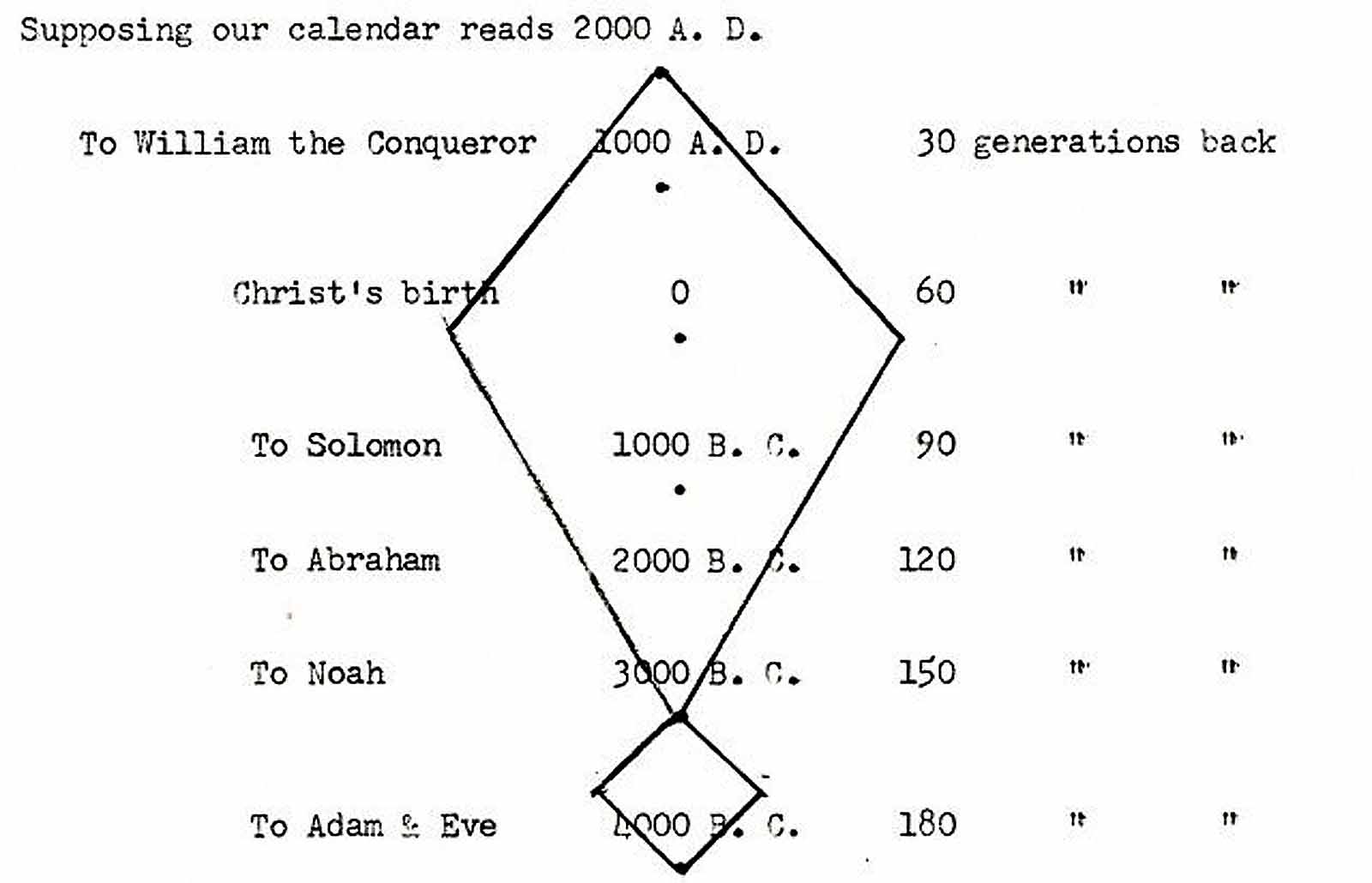
While this set of diagrams, admittedly, is crude, yet the concept of a pedigree back to Adam may be shown. No claim is here made that the historical person lived at the exact time of each thousand year as indicated. For example, no chapter and verse is being offered that Noah and the 3000th B.C. year agree with the actual date. The other pairs are not too far off. After all, a general idea of the period of time is shown.
The purpose of such a diagram is but to show that before our pedigree can be completed it has to cease fanning out. As stated, at what point that will be is not known. It would seem quite logical that it would reach its zenith considerably closer to our present time than is indicated by the diagram. Too, the 180 generation figure is but using three generations to the century - simply by rule of thumb.
And, what is this all about? Simply to call attention to the fact that out there in the past - some distantly, some almost neighboring to us - are our ancestry to whom we have an obligation. Those who appear on our personal pedigree have contributed to our makeup. Any goodness we have in us has been inherited from someone or, more correctly, from many someones. They have provided us with what we are. We have become their debtors.
Perhaps, foremost, we should remember they, and we, lived in a world prior to this. We all then knew we were coming to this earth for specific purposes. It has been said that our understanding was that we each were assigned to come where we did and when and that the comforts of our generations were to be at the expense of our progenitors pleasure and comfort. Today's understanding of the plan of and for life and our physical comforts have become the results of centuries of development. Our world is not the world in which our ancestry resided. Perhaps they never envisioned that their descendants three, five, ten generations hence would enjoy the physical comforts nor mental maturity, nor social freedoms nor the blessing of the restored gospel such as we enjoy.
It is hoped this brief history has made us a little better acquainted with these folk have laid a family foundation on which, particularly, the last few generations stand. To a great degree we are what our ancestry made us and, certainly we are grateful to them. As has been retold in this account, often their life was not easy, but from generation to generation they pressed forward and, perhaps, what we can be most grateful for is that they had the vision to see in American opportunities which existed nowhere else in the whole world and they gambled and won.
Let us, in our generations take pride and feel gratitude. One person has said, "People who take no pride in the noble achievements of remote ancestors will never achieve anything worthy to be remembered with pride by remote descendants."
May the lives of those with whom we have shared in this history become the 'kith and kin' of our heart's memory.
To see the family pedigree charts of Edward's and Althera's children click on their names in the pedigree chart below.
- George = Mary Bailey (Married 31 July 1895)
- Sarah Ann = Archibald Nisbet (Married 30 June 1895)
- Mary = Edmond Wilkes (Married 10 June 1903)
- Thomas = Hettie Wilkes (Married 10 June 1903)
- Maria = Brigham Gardner (Married 7 April 1904)
- Isaac (Died 24 July 1886)
- William = Ella Kenyon (Married 23 February 1913)
- Marintha = George Williams (Married 25 October 1911)
- Hyrum = Elva Cazier (Married 23 January 1915)
- Fannie = Earl Cazier (Married 28 June 1917)
- Kemuel = Marie Hill (Married 30 June 1921

